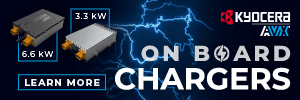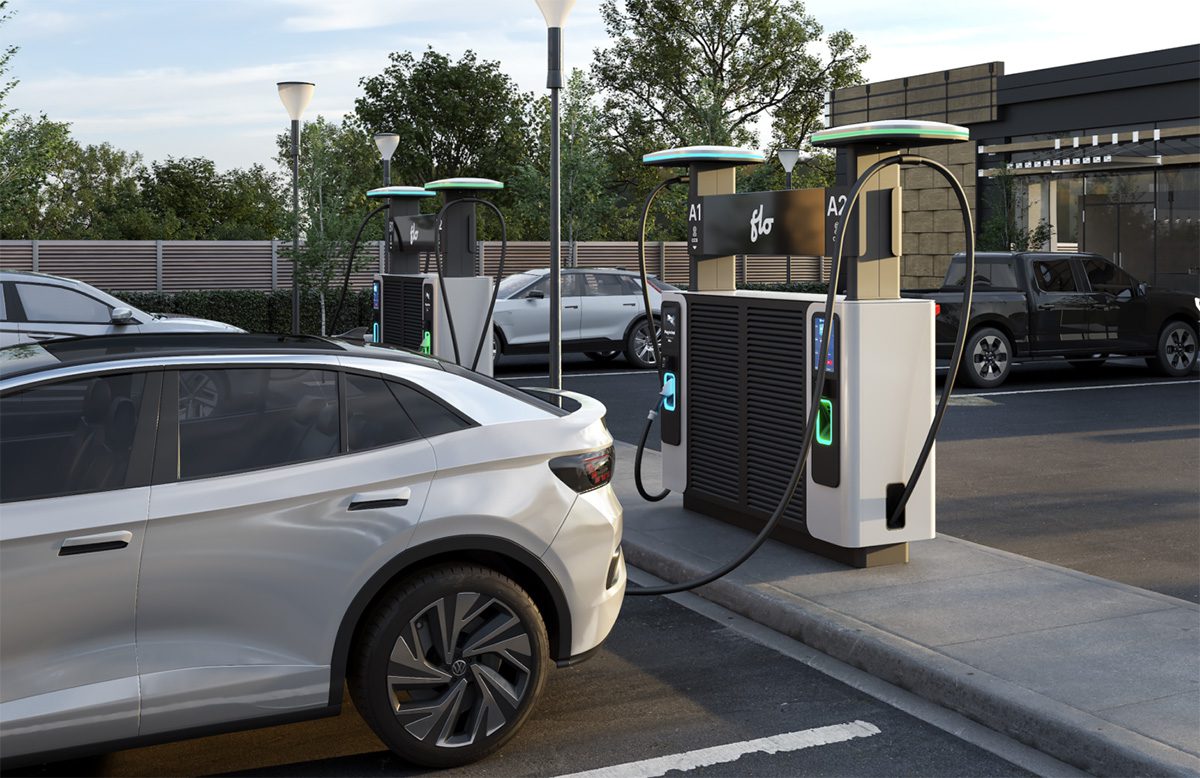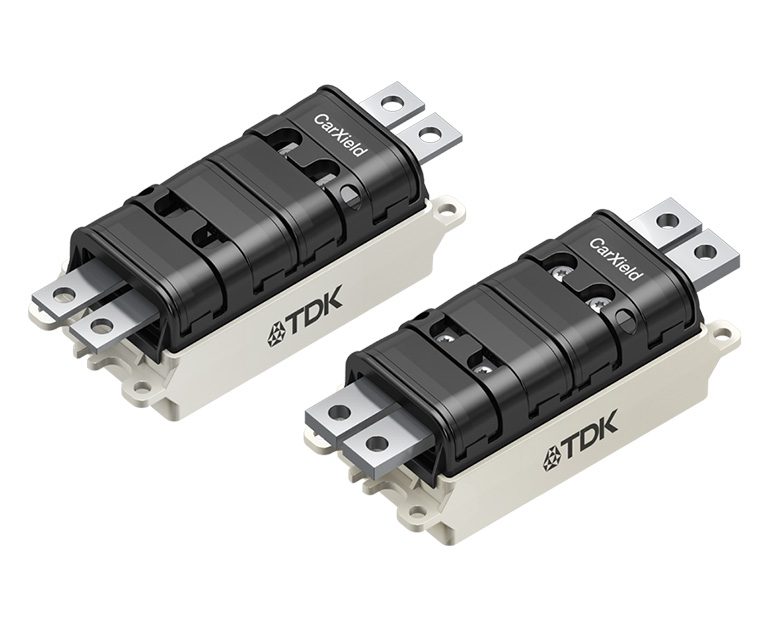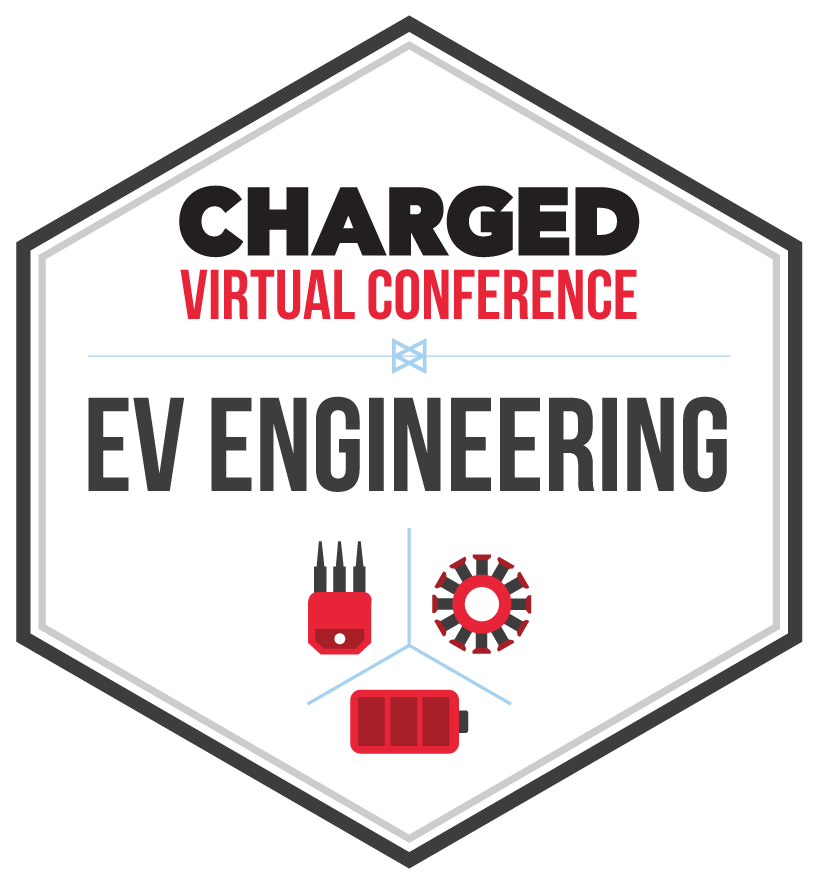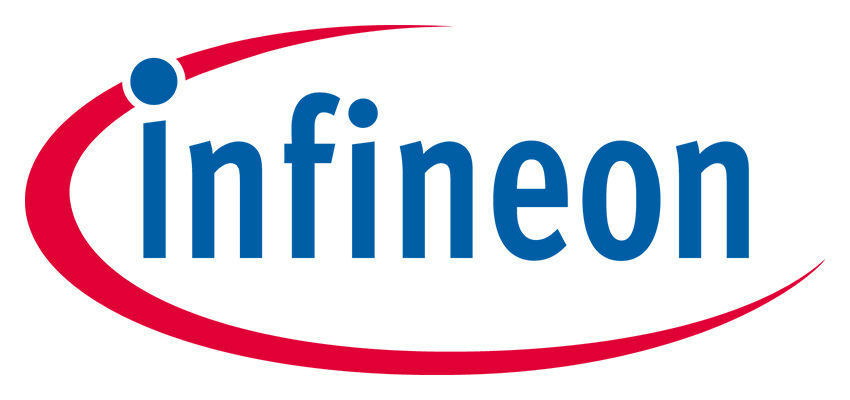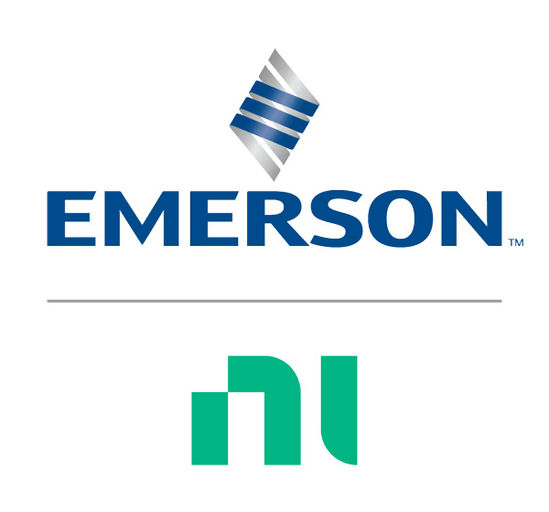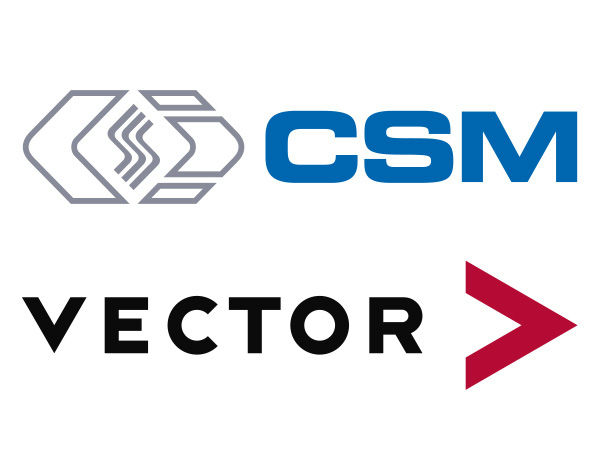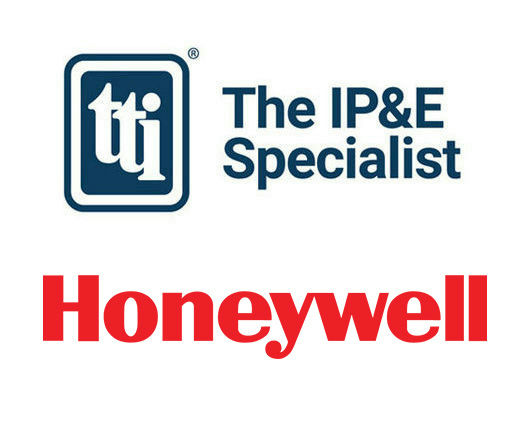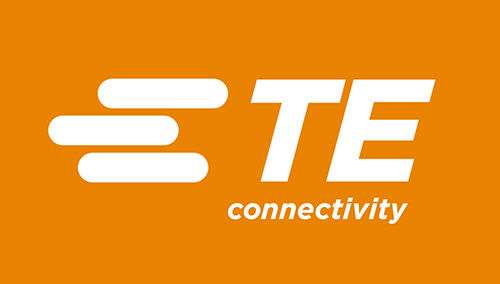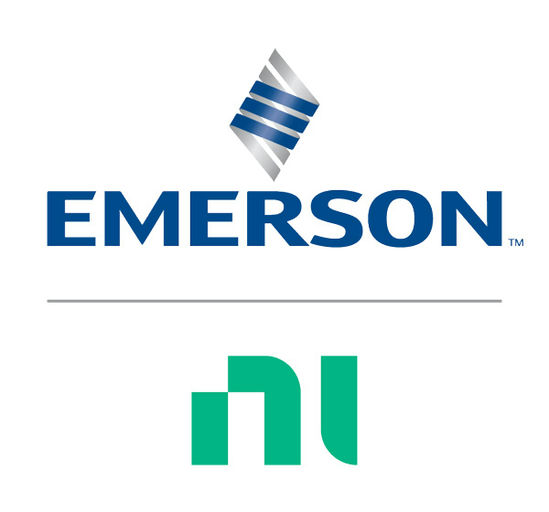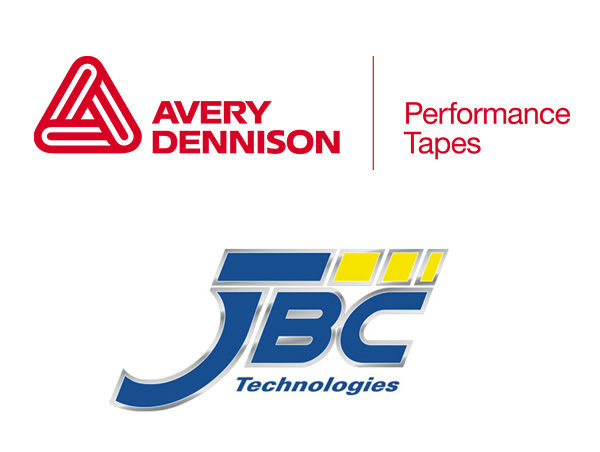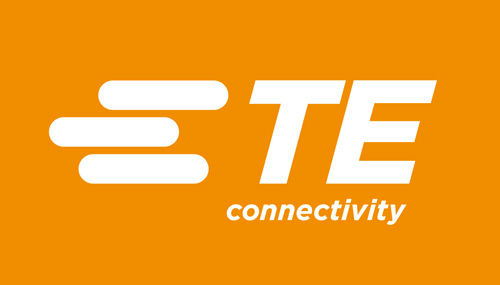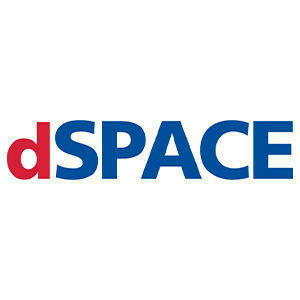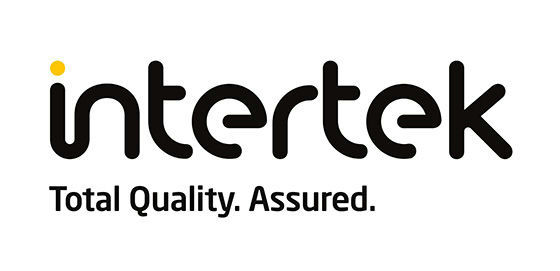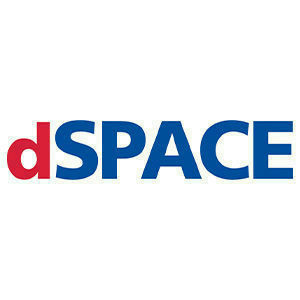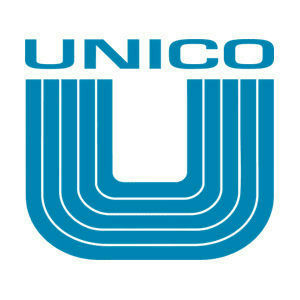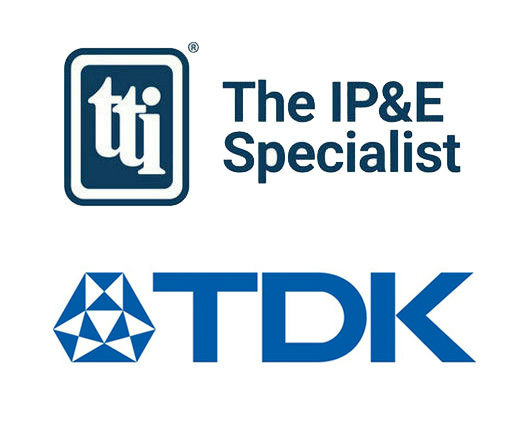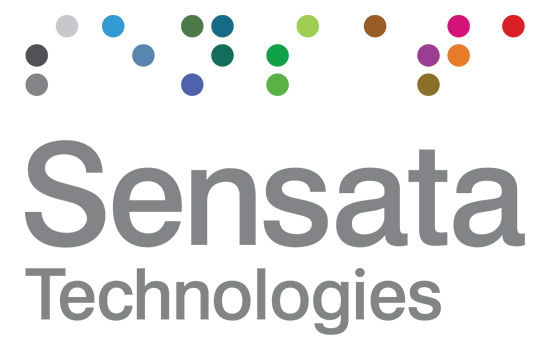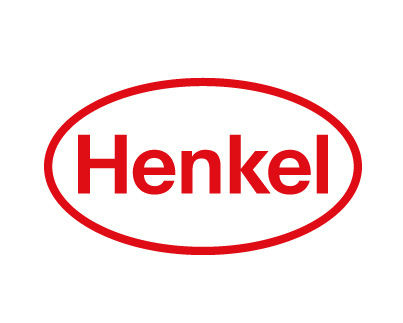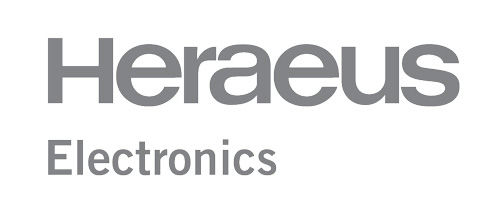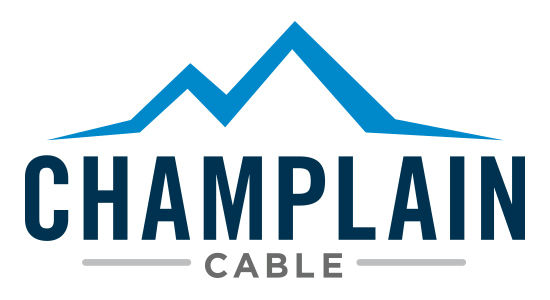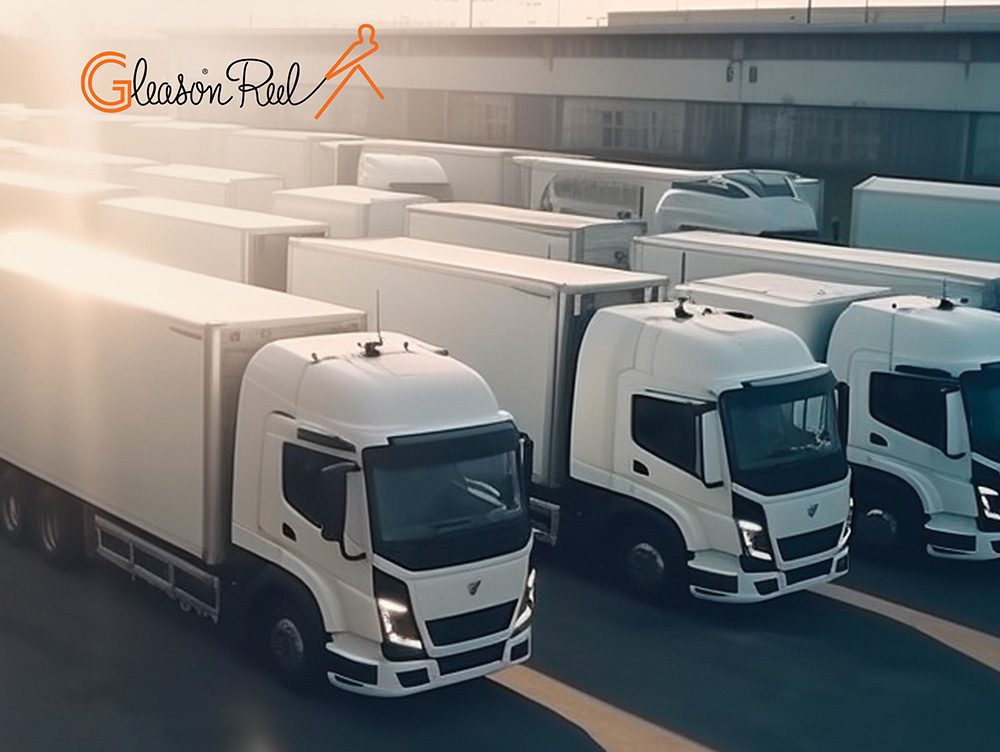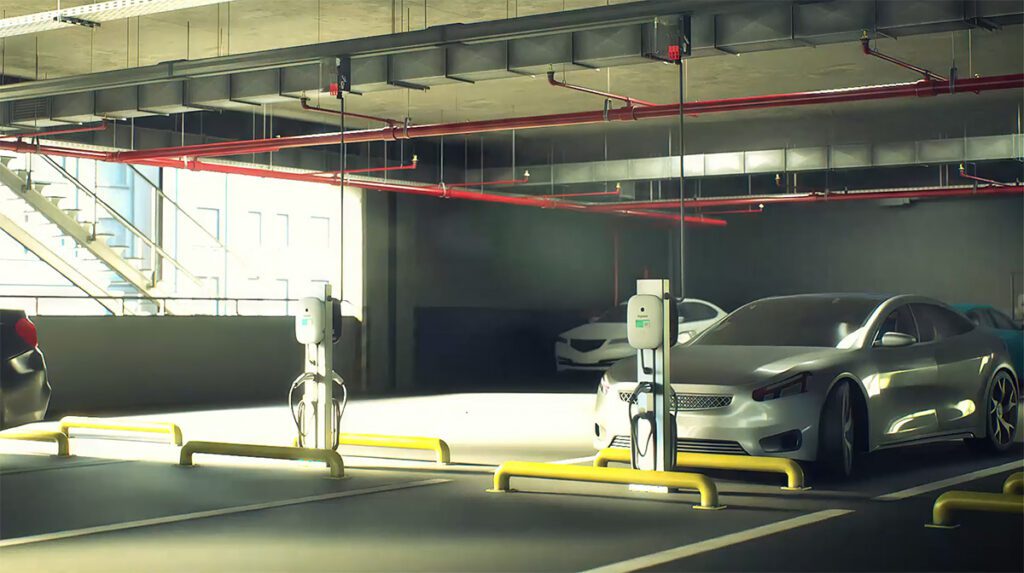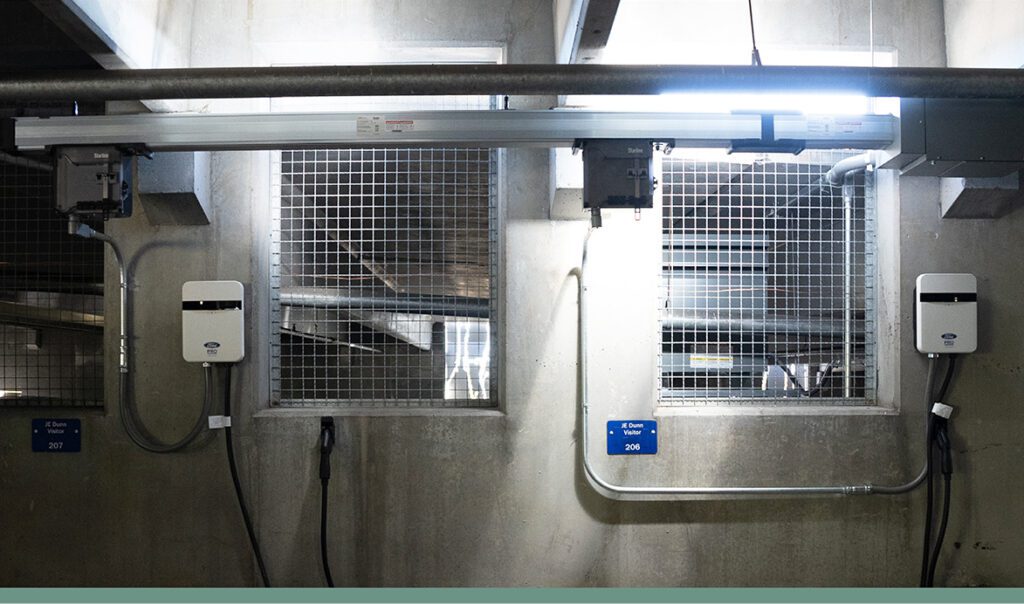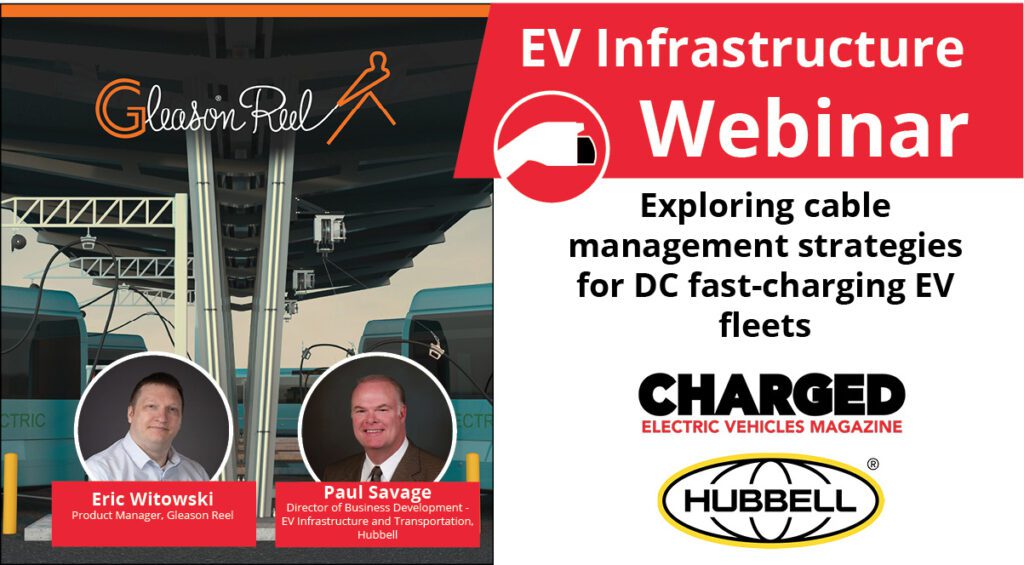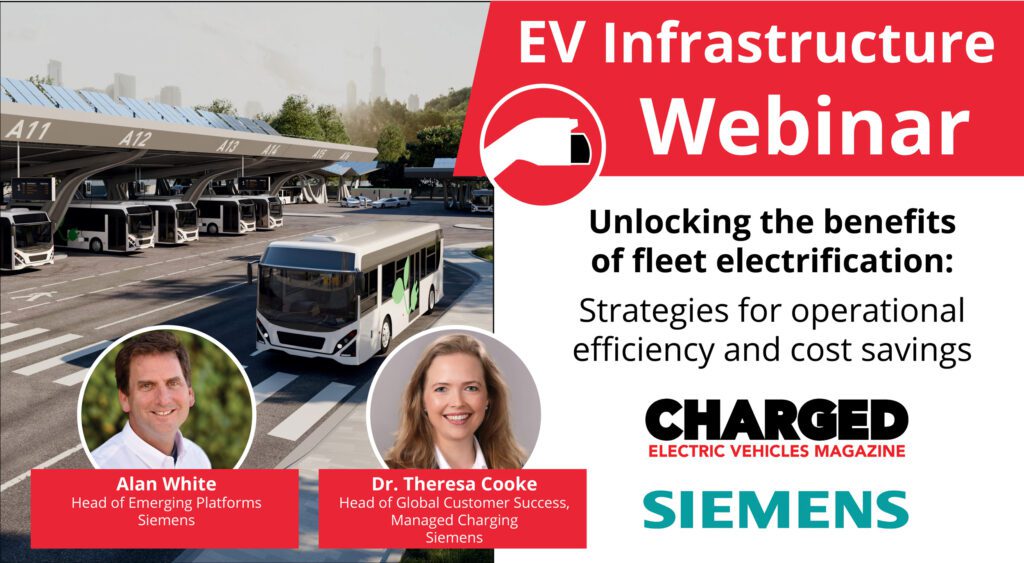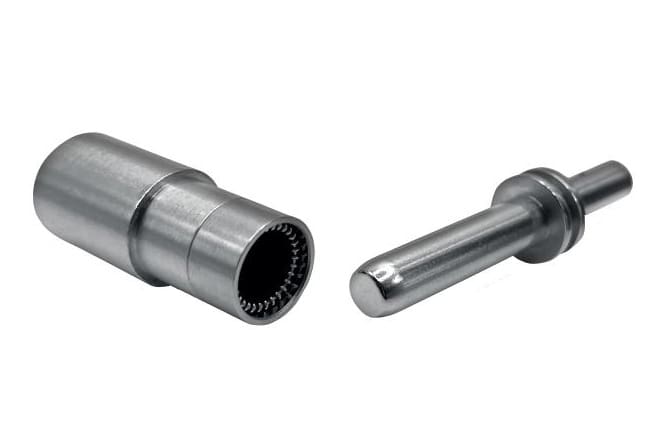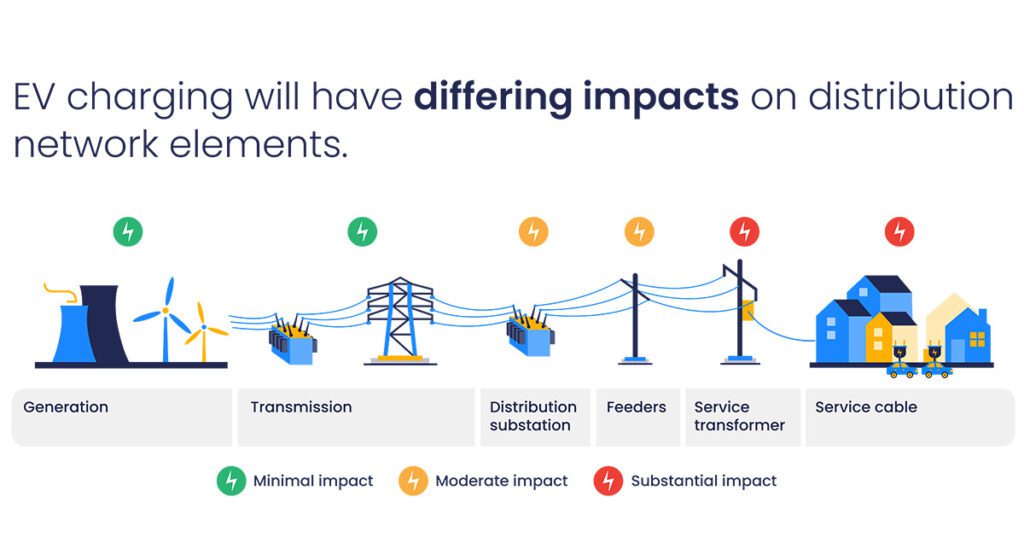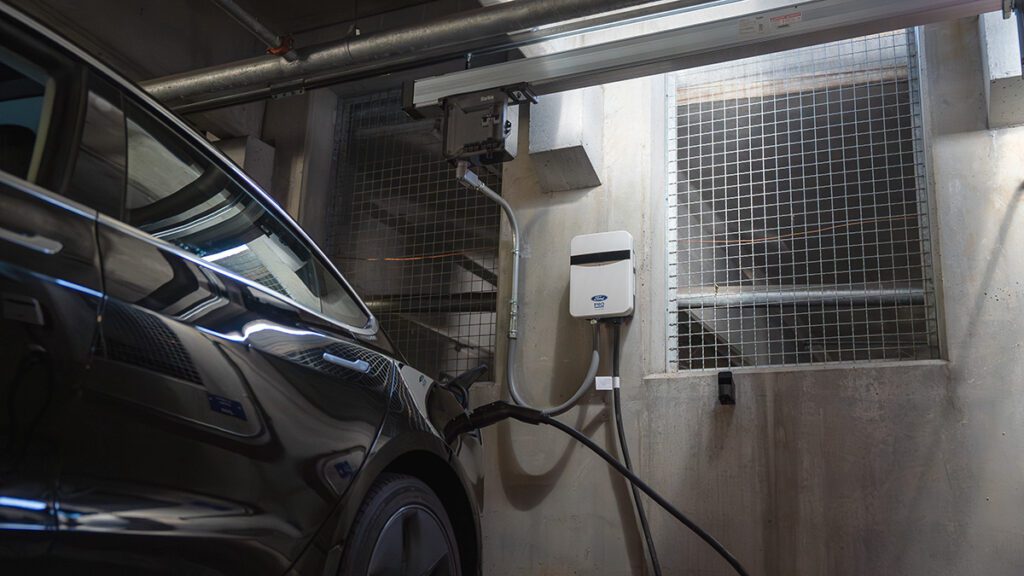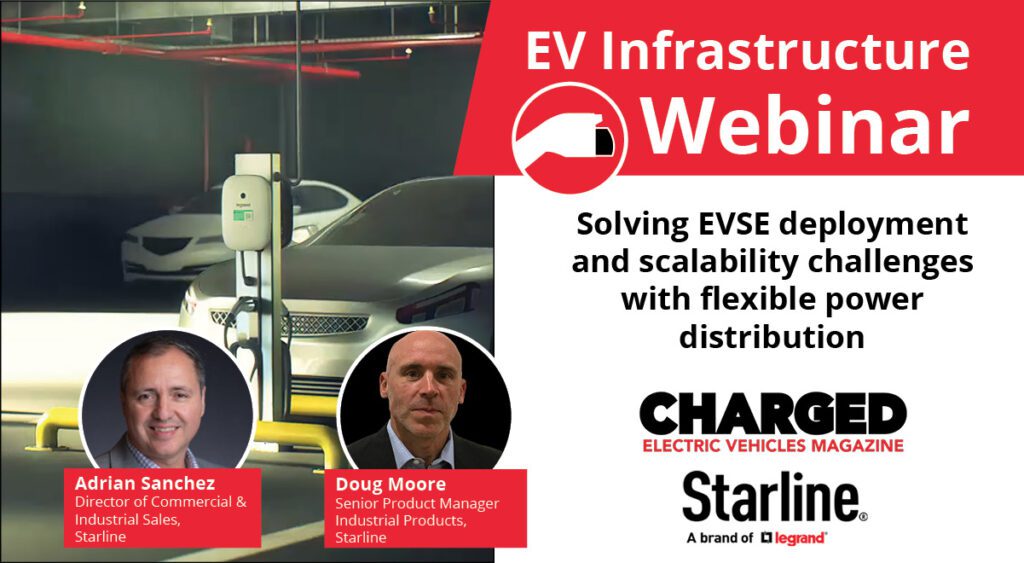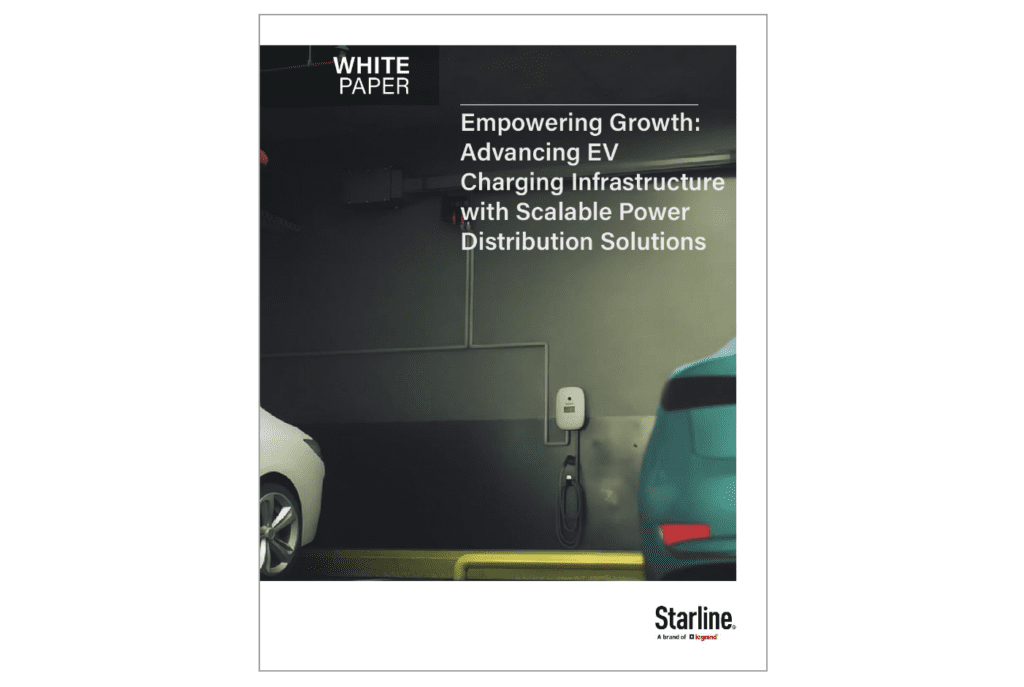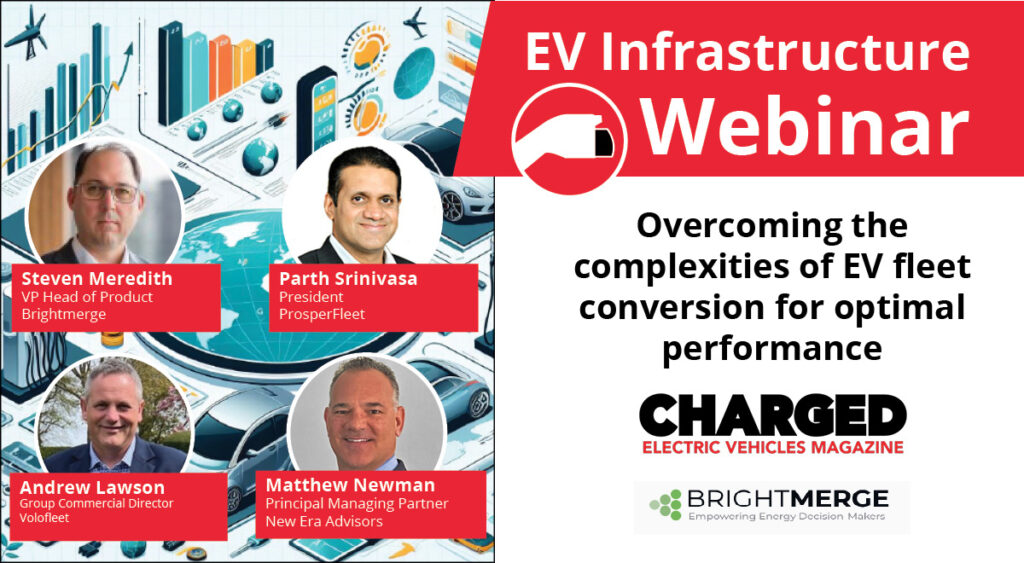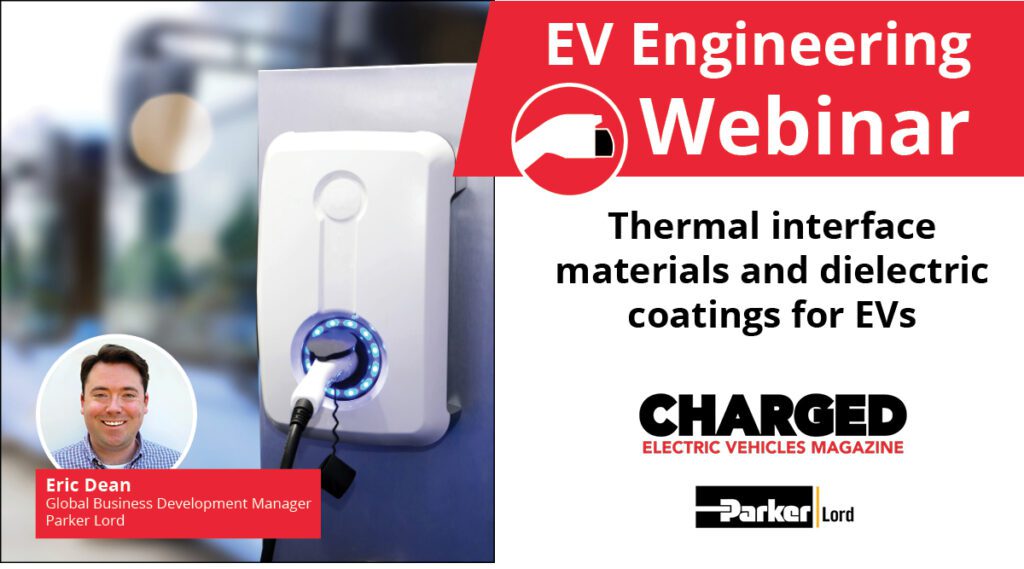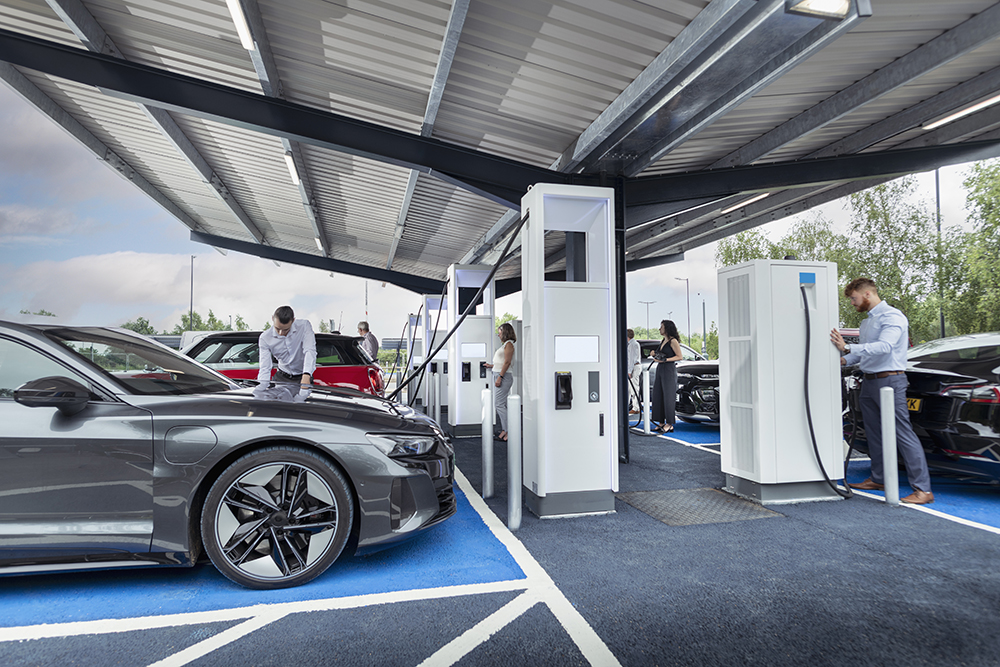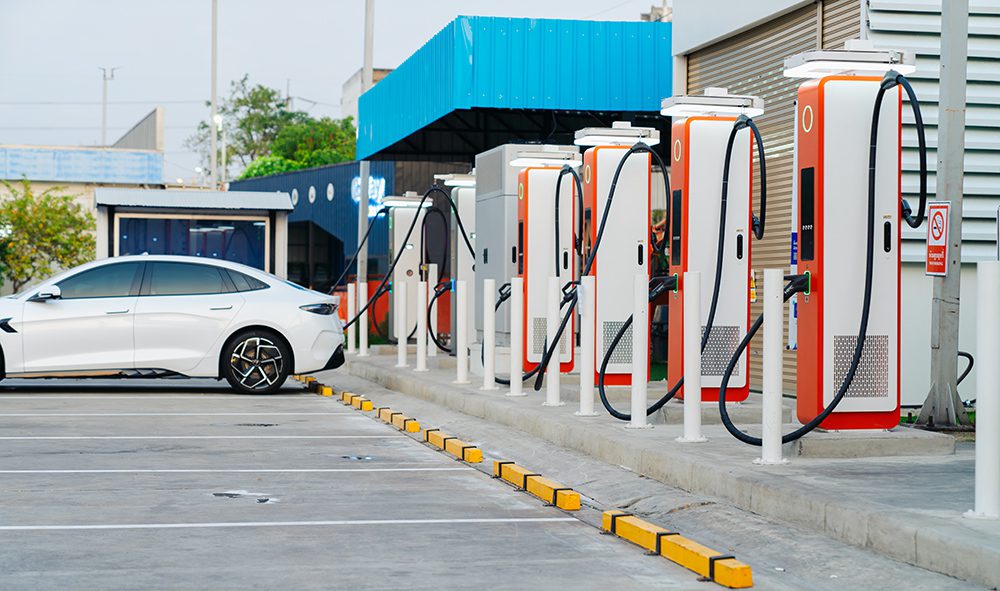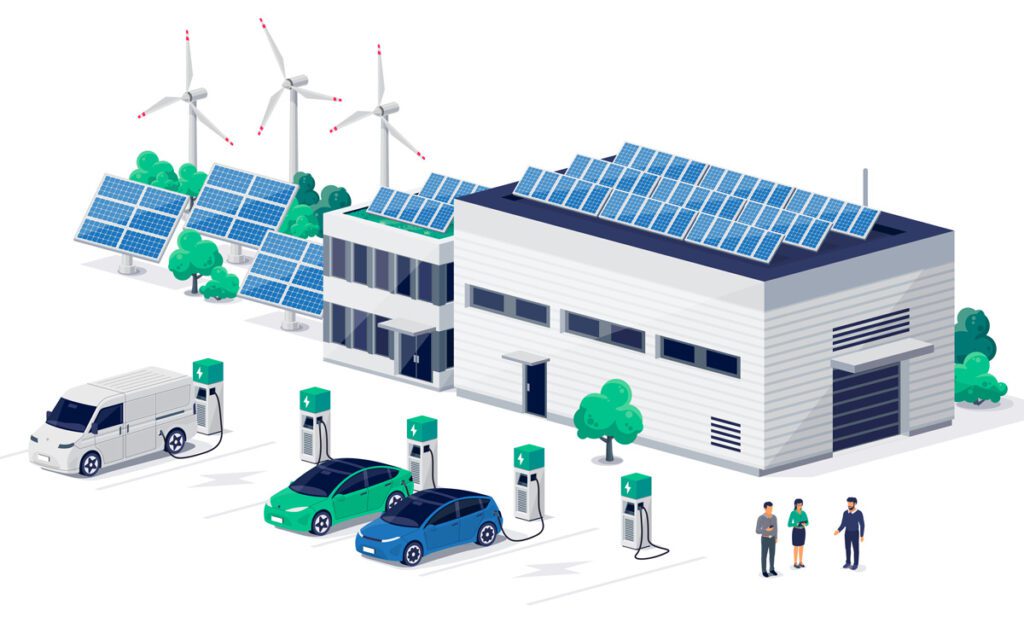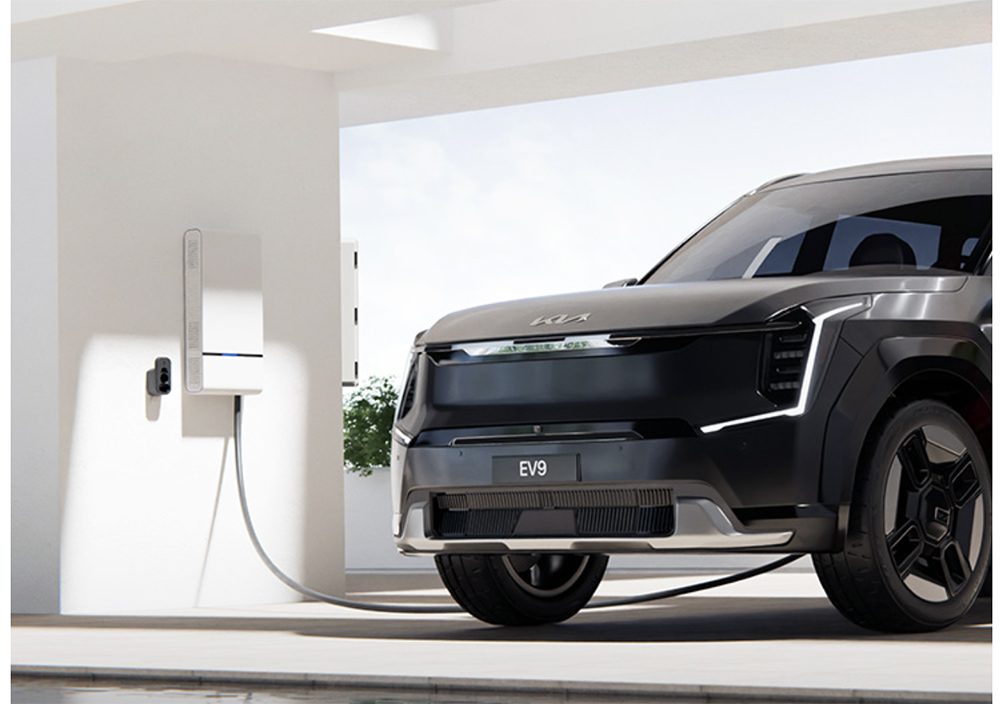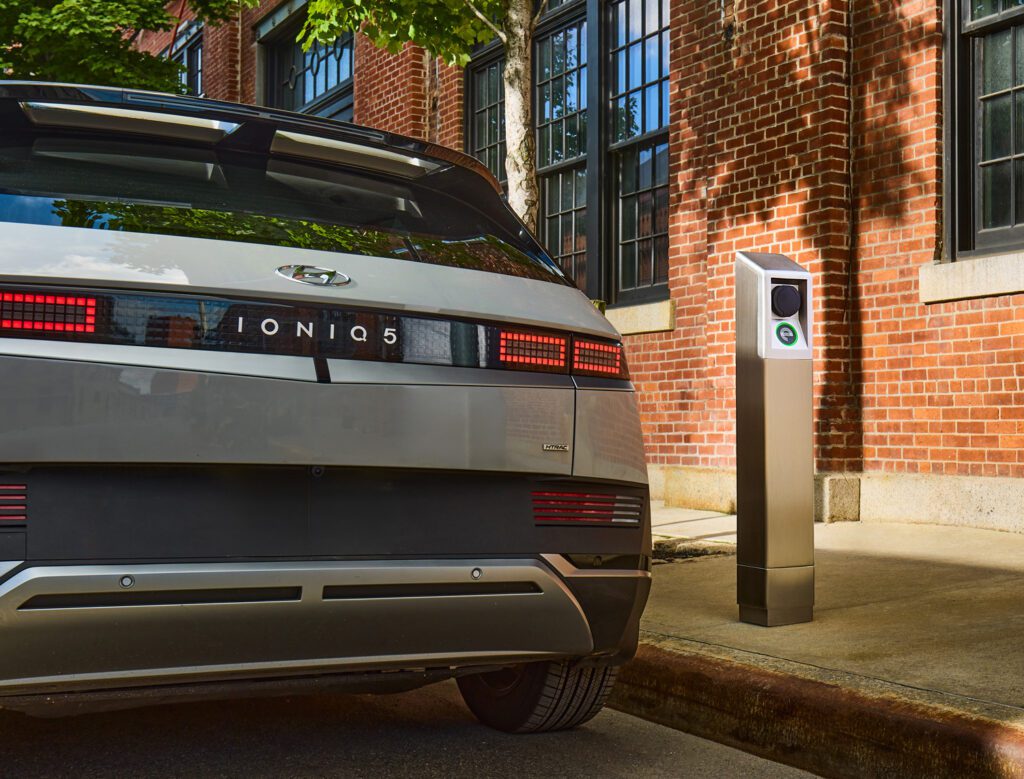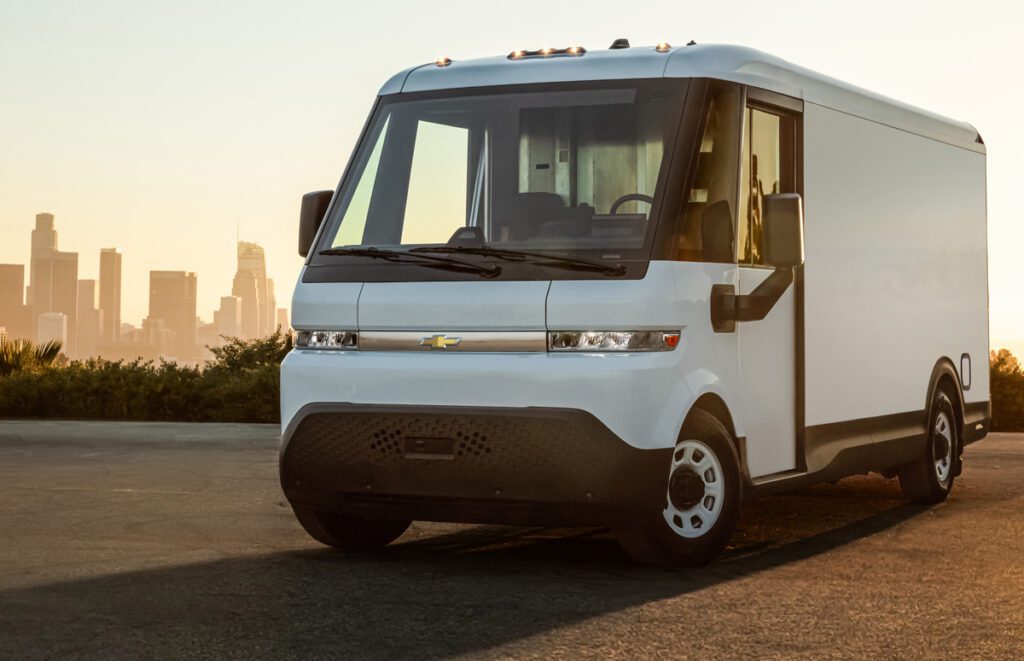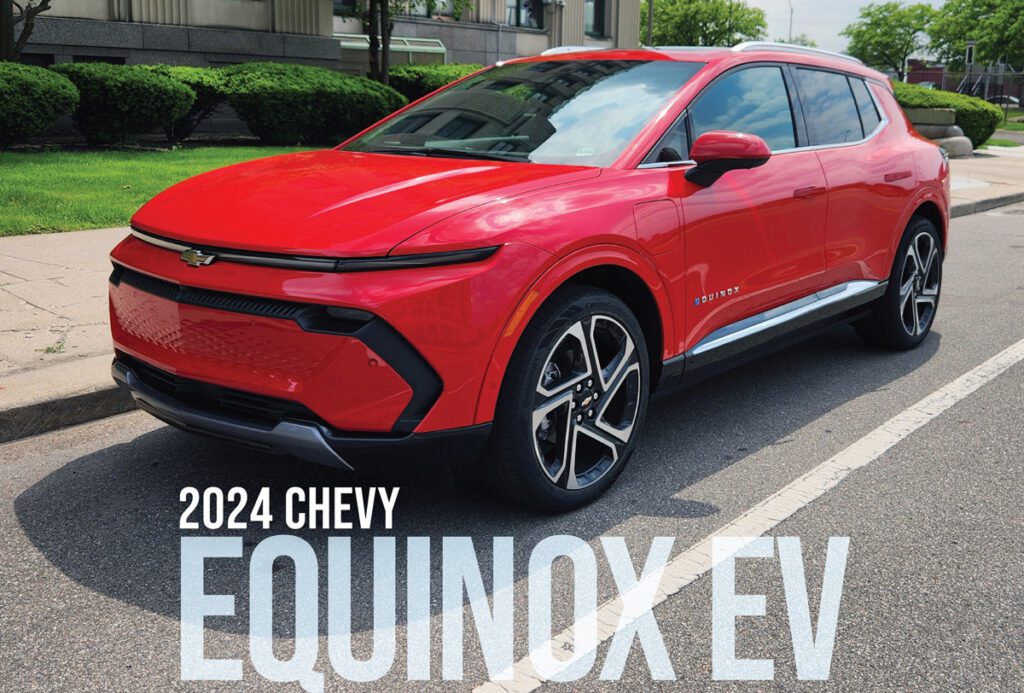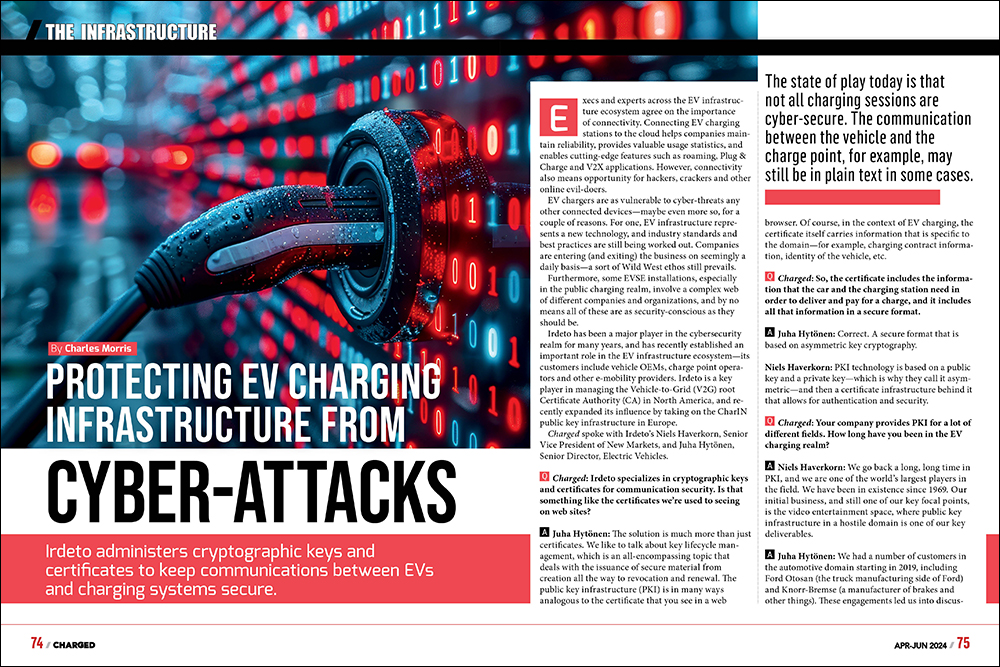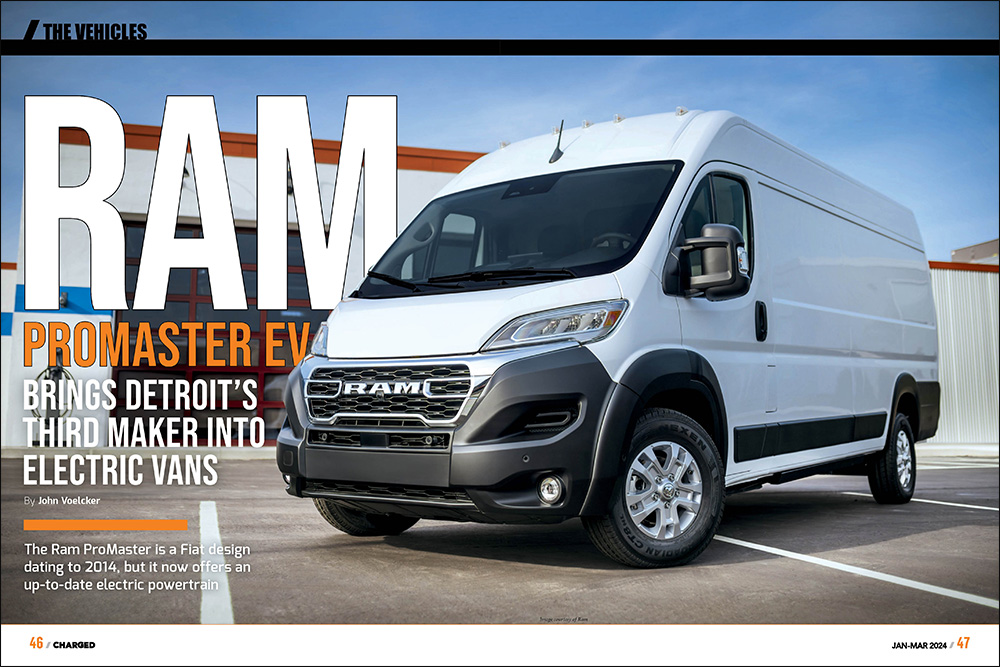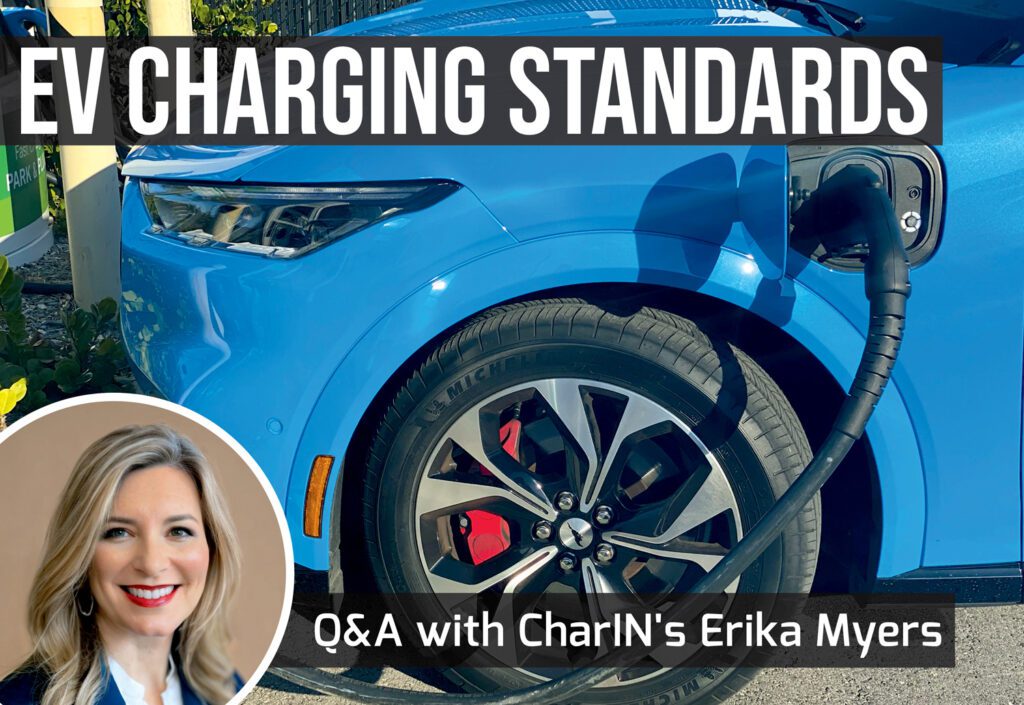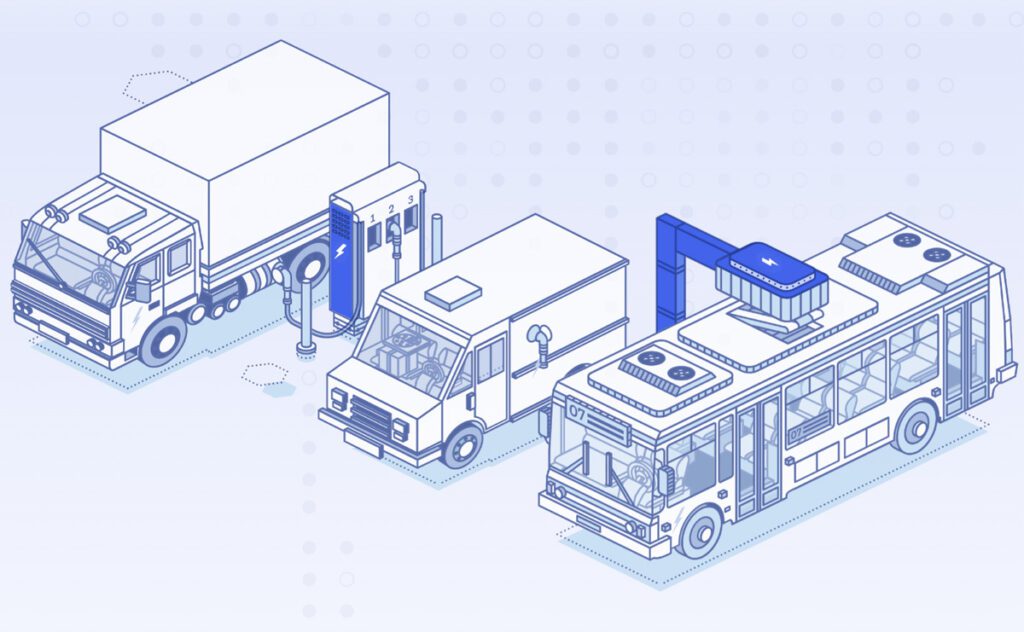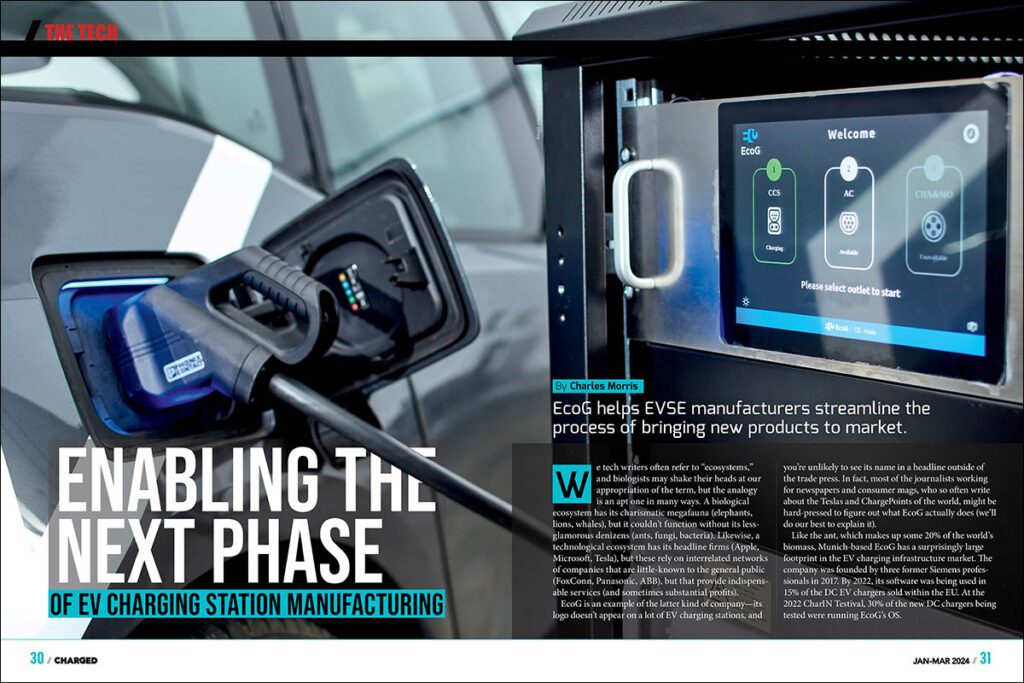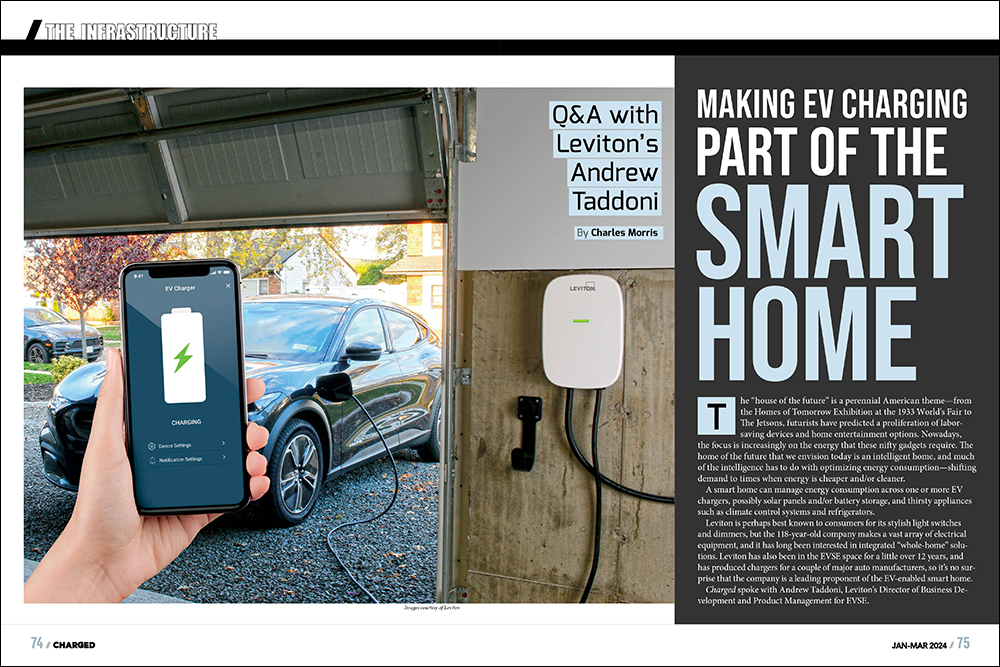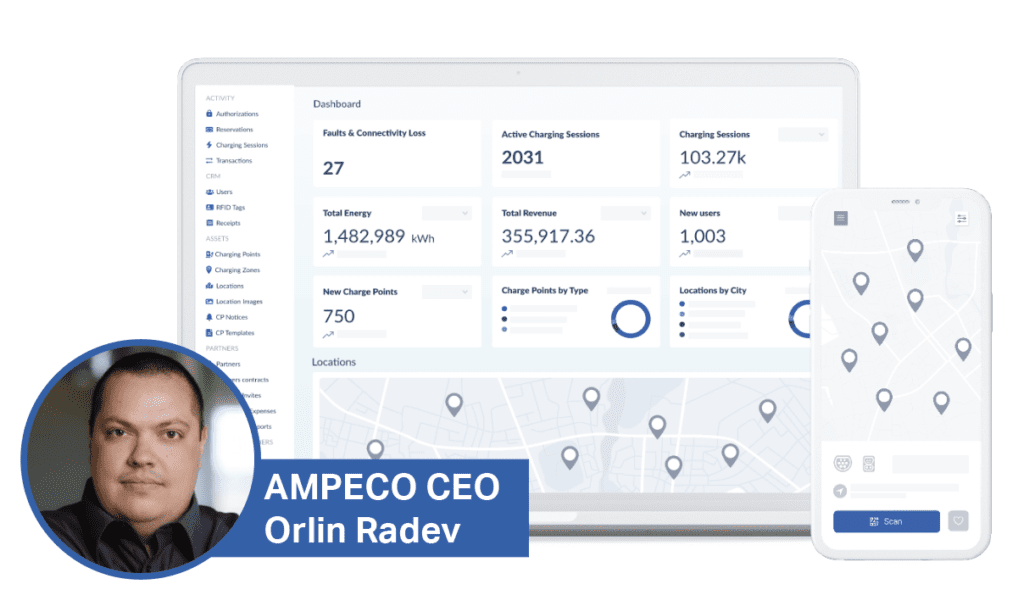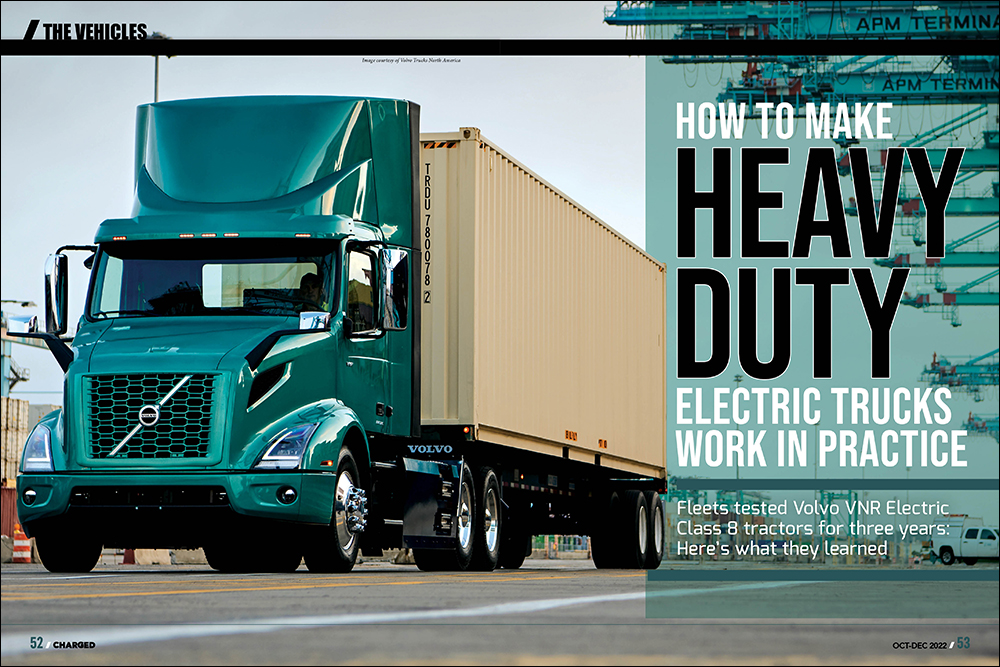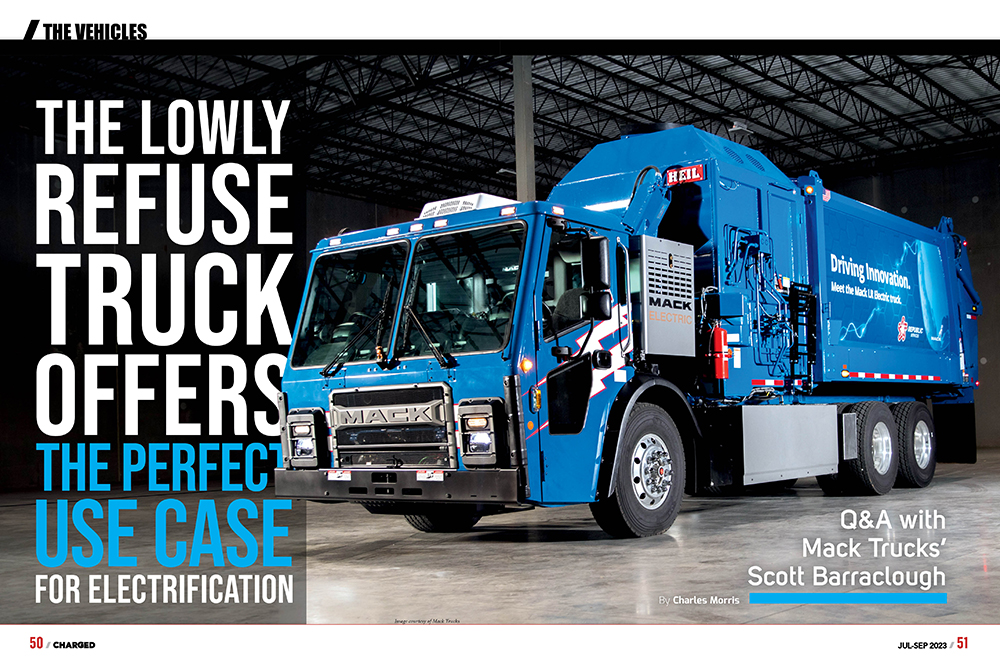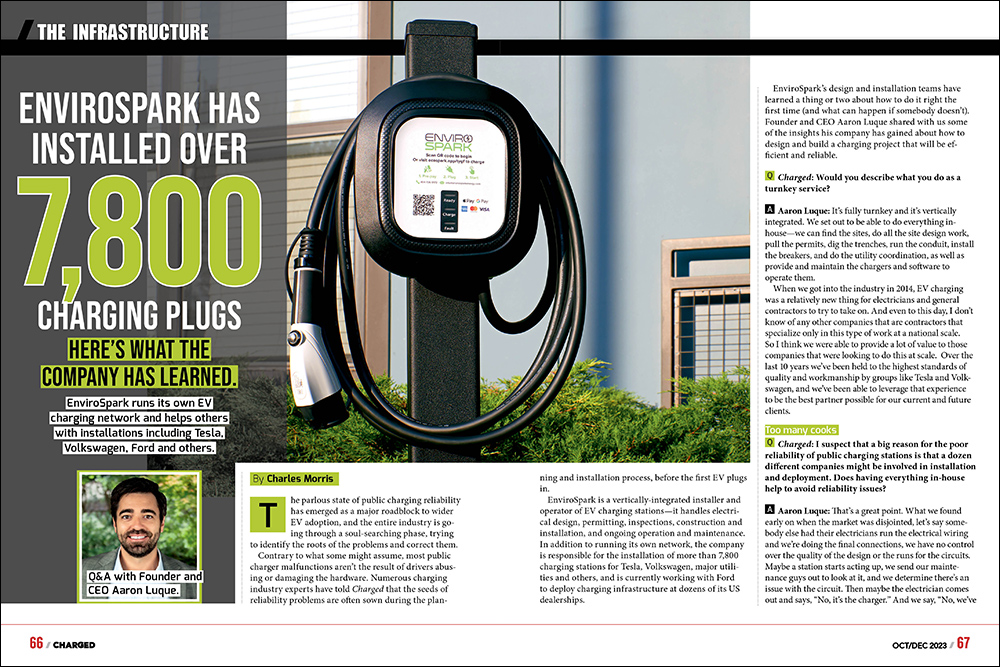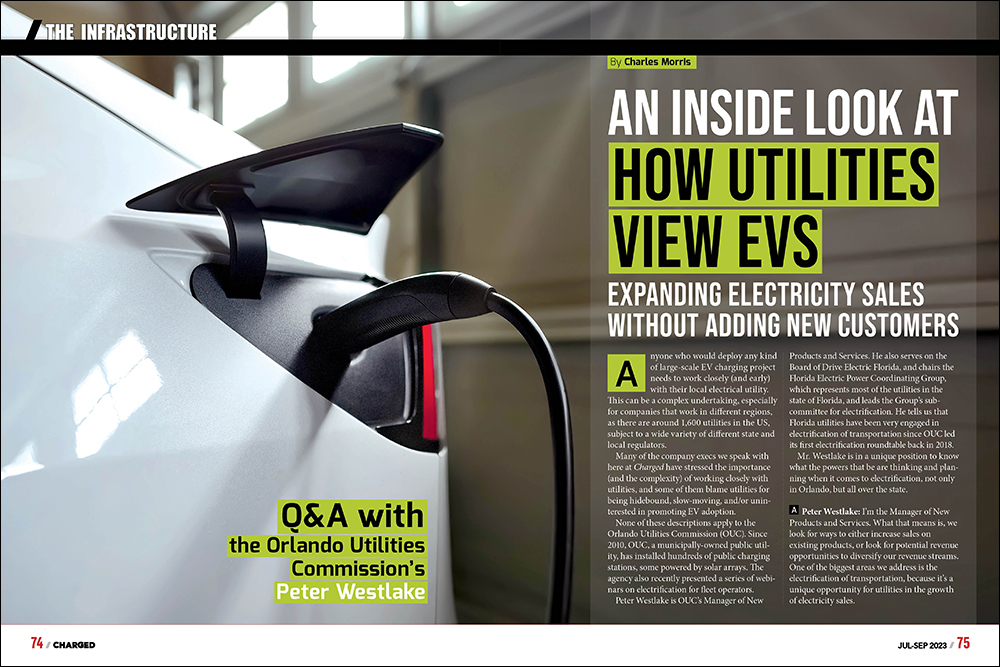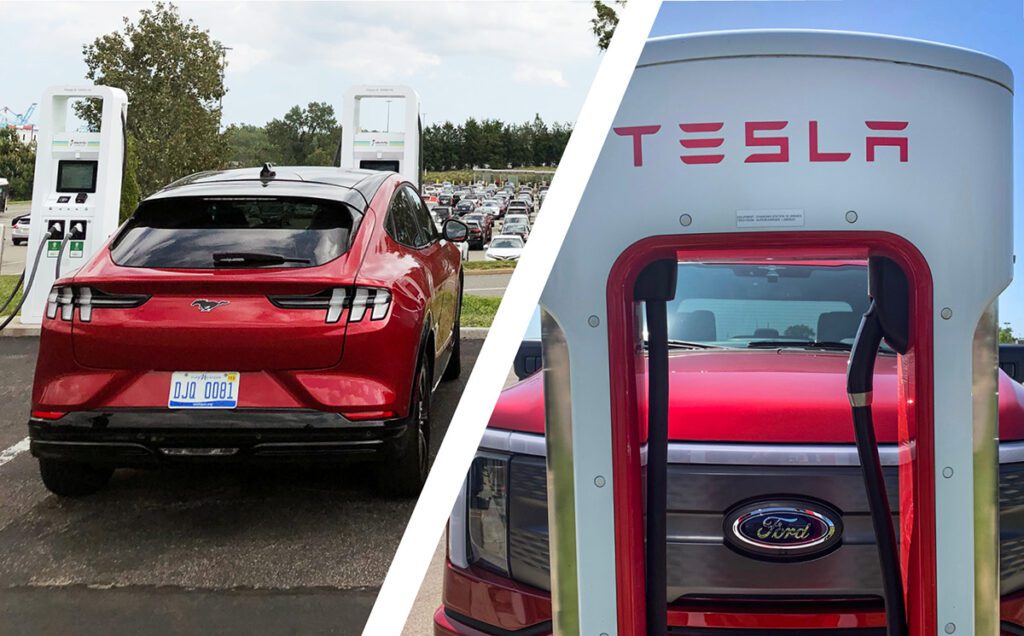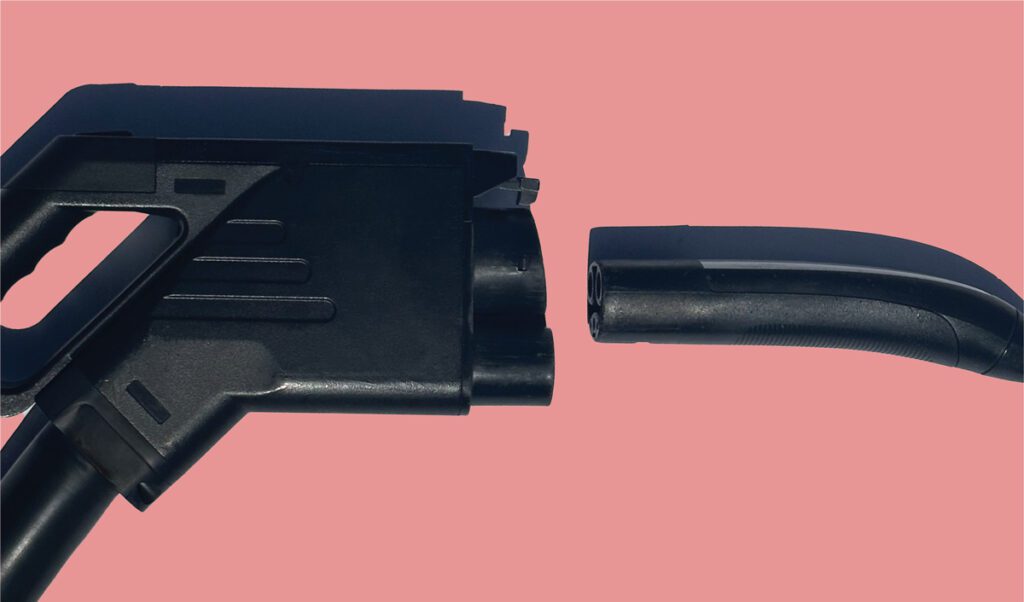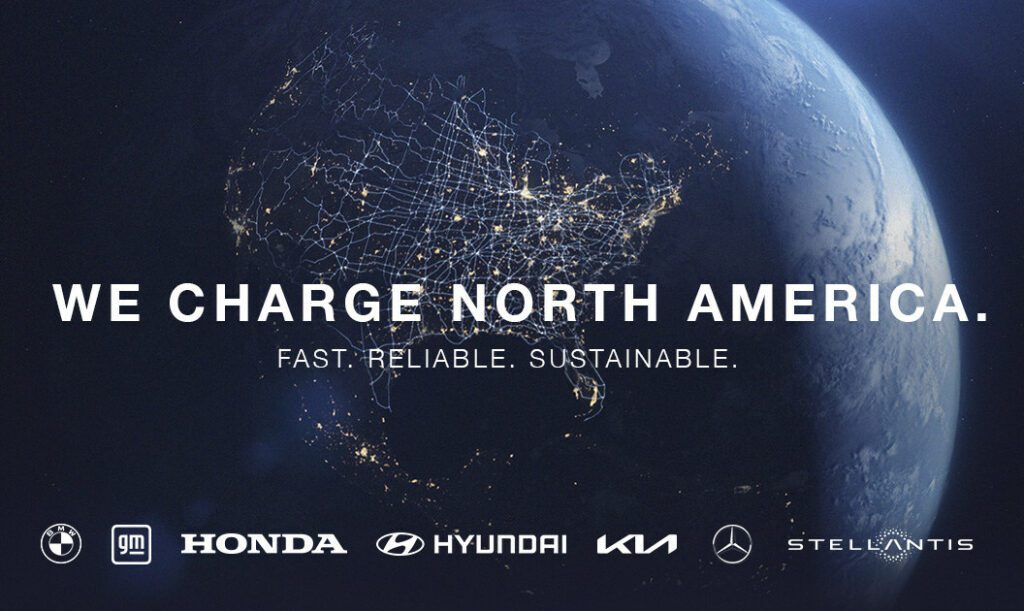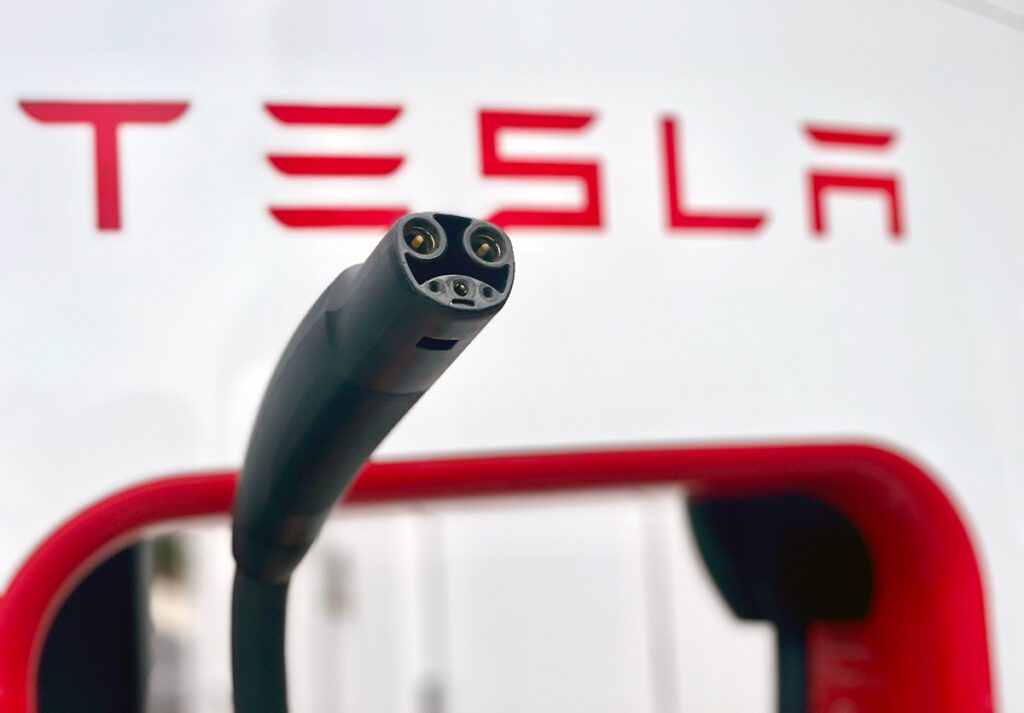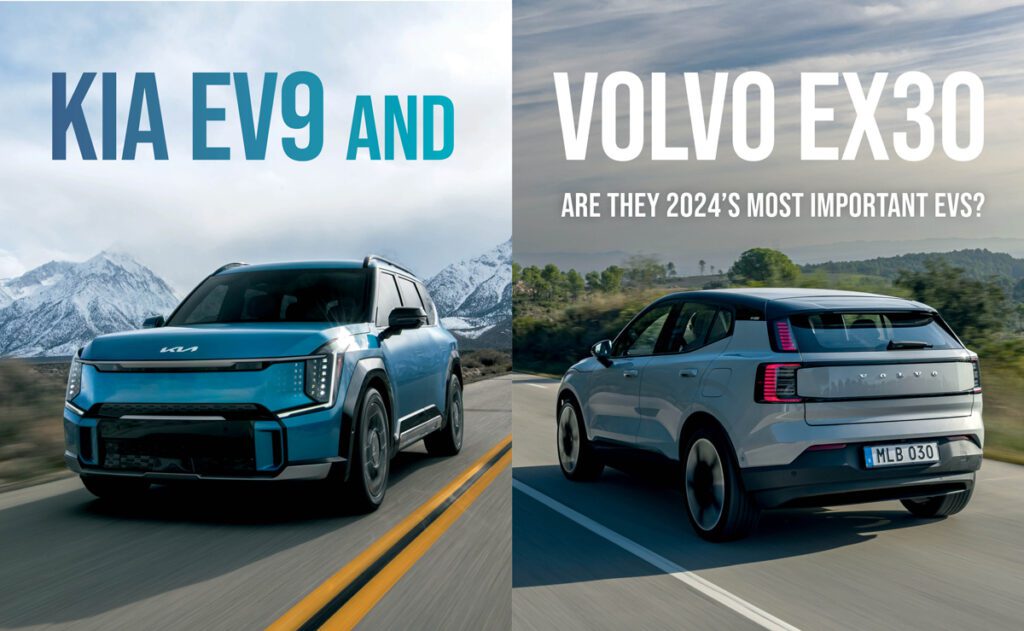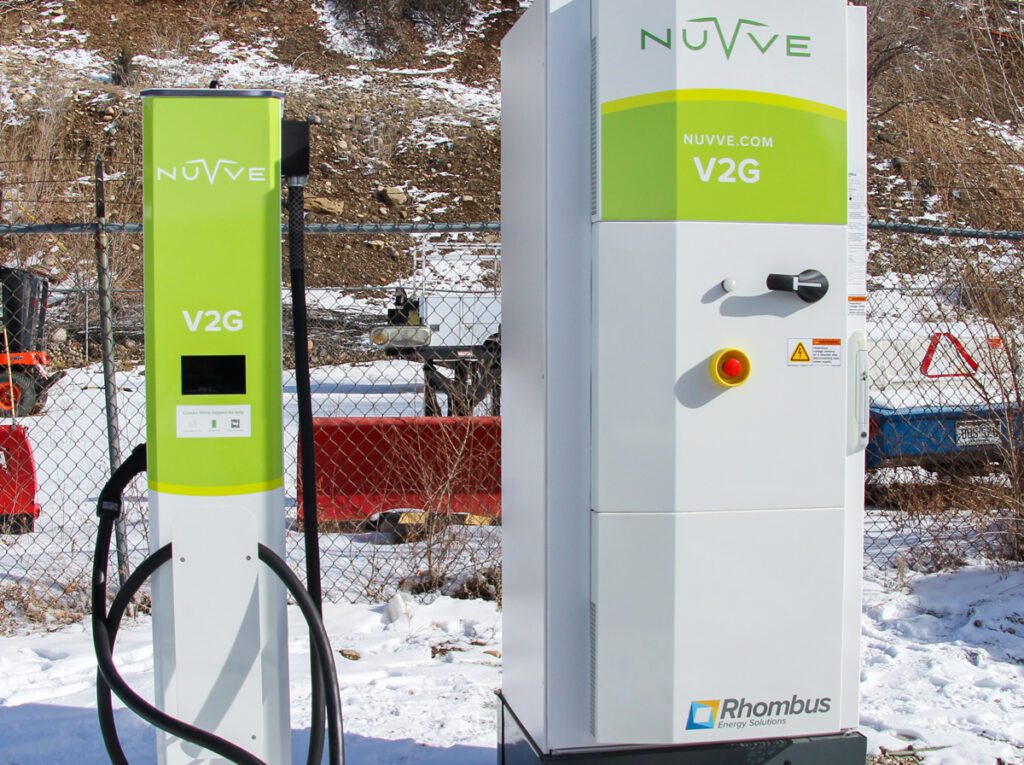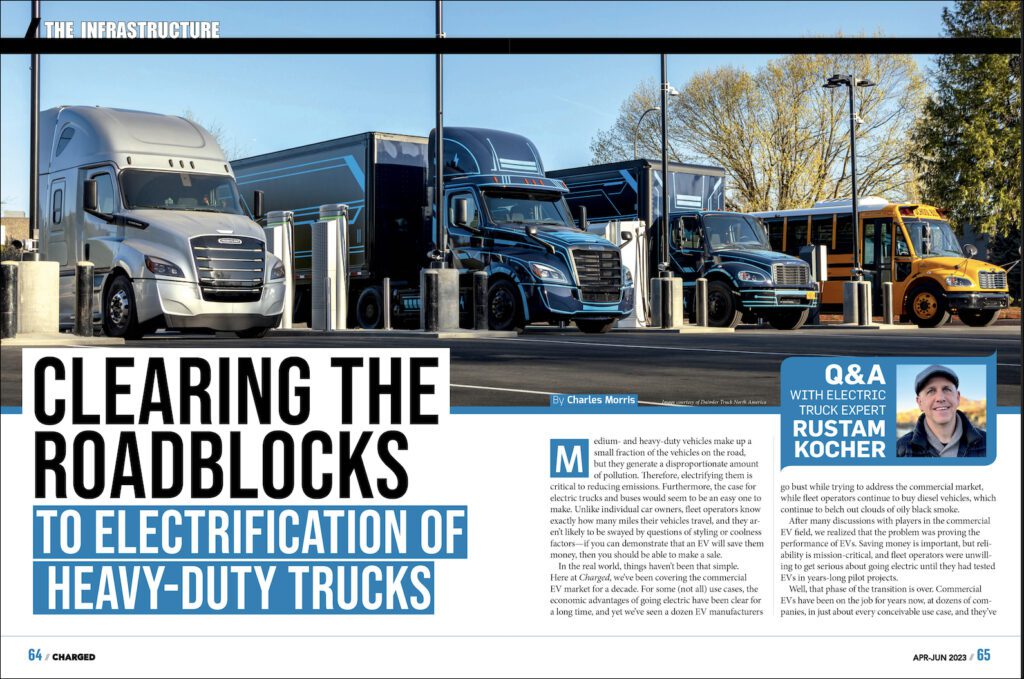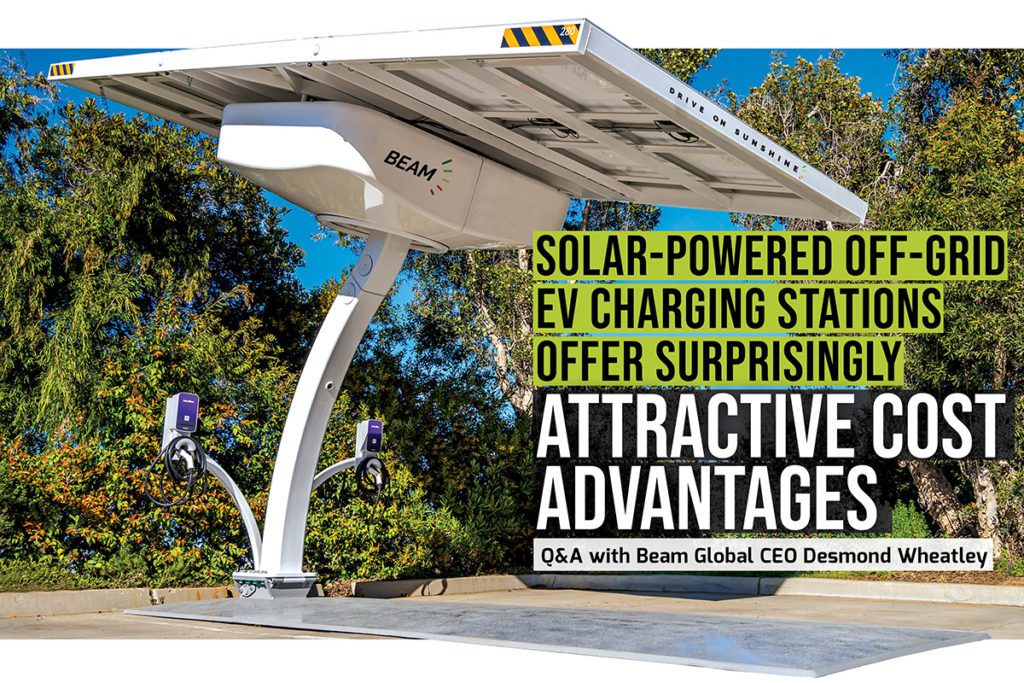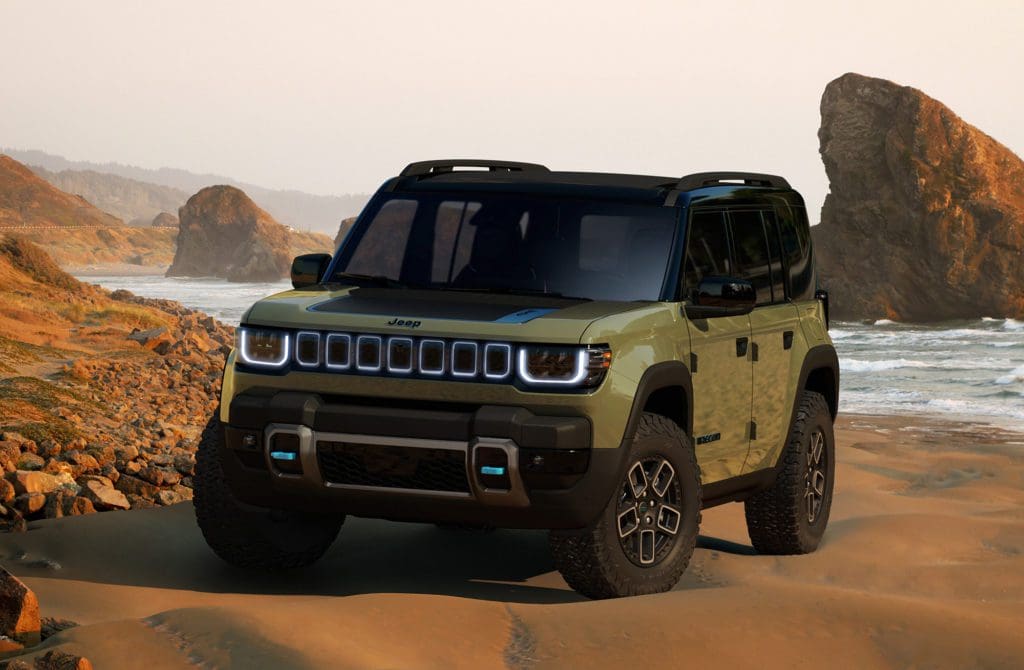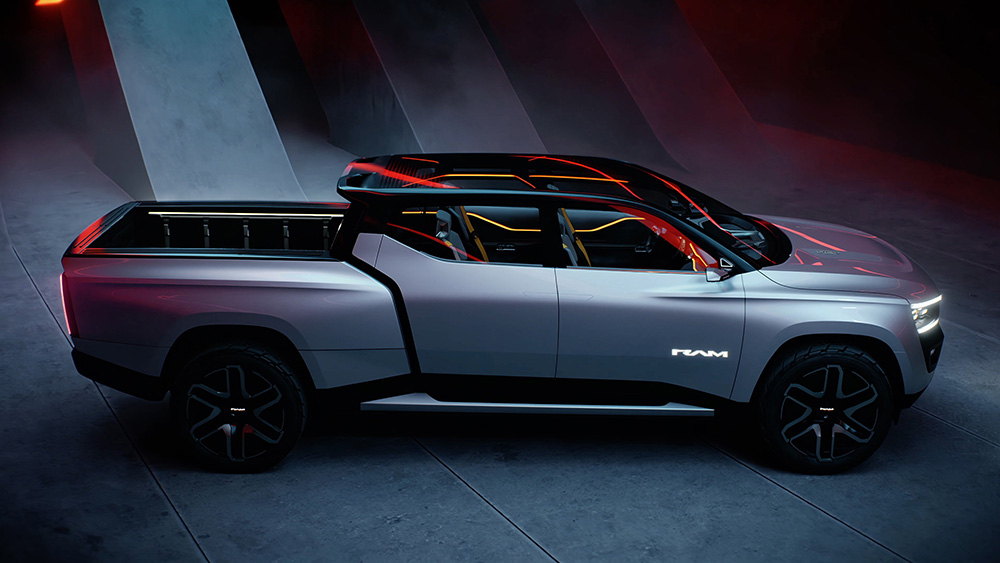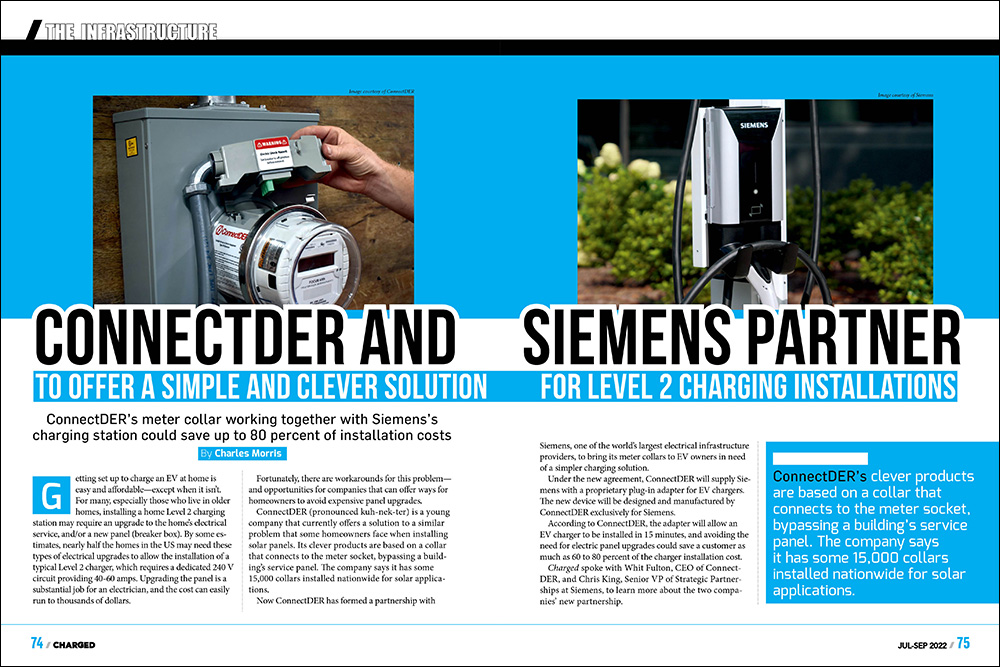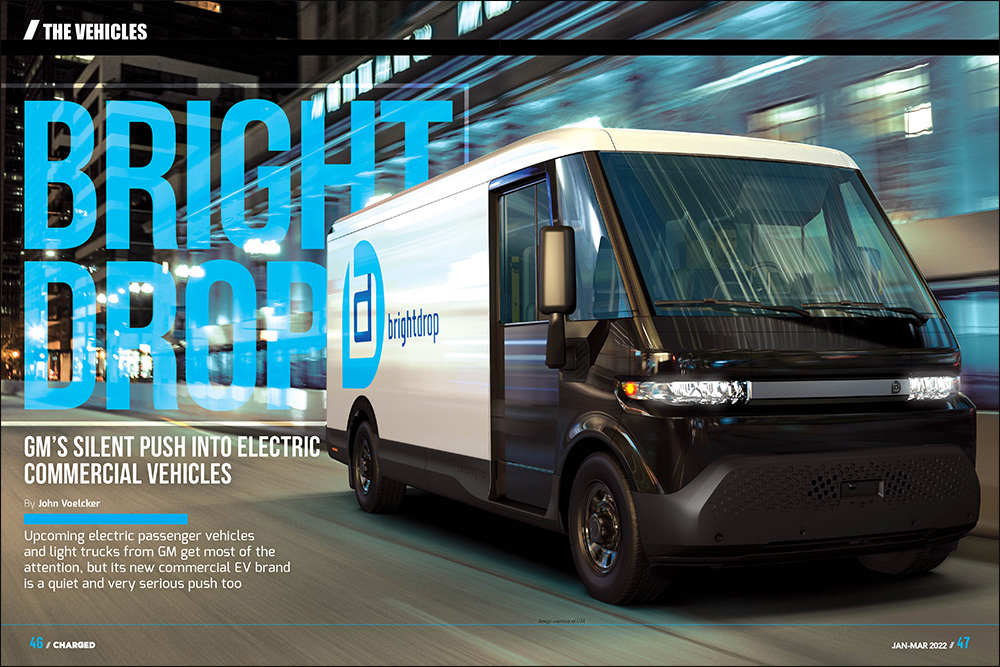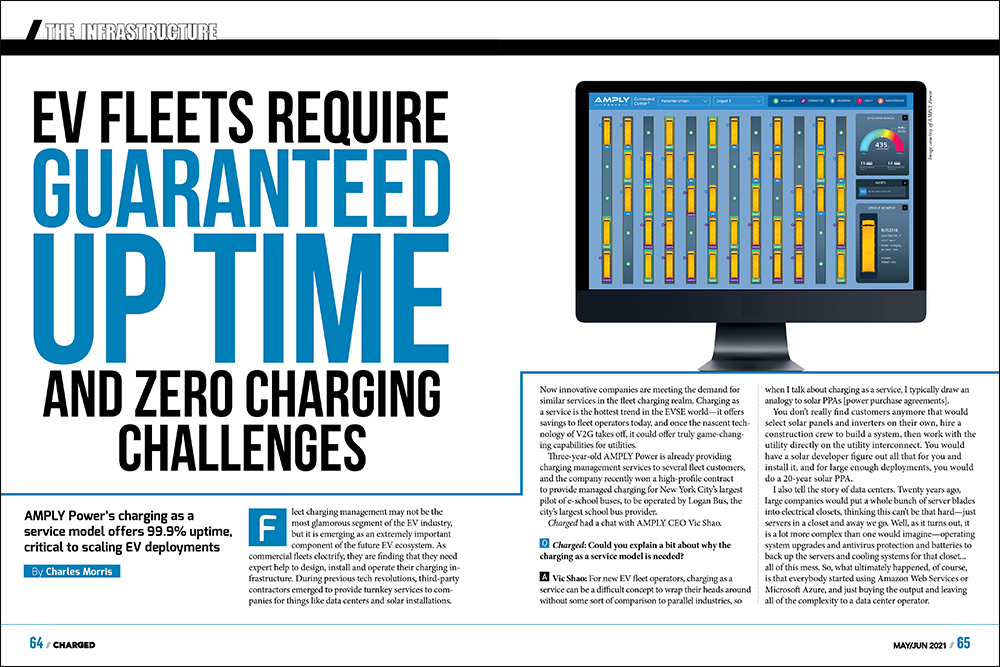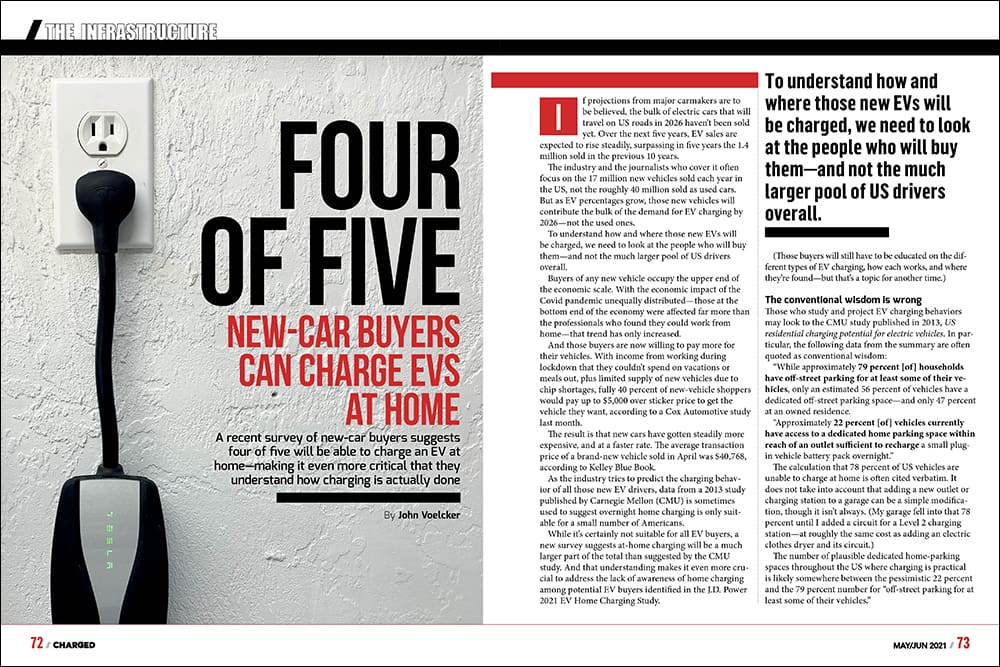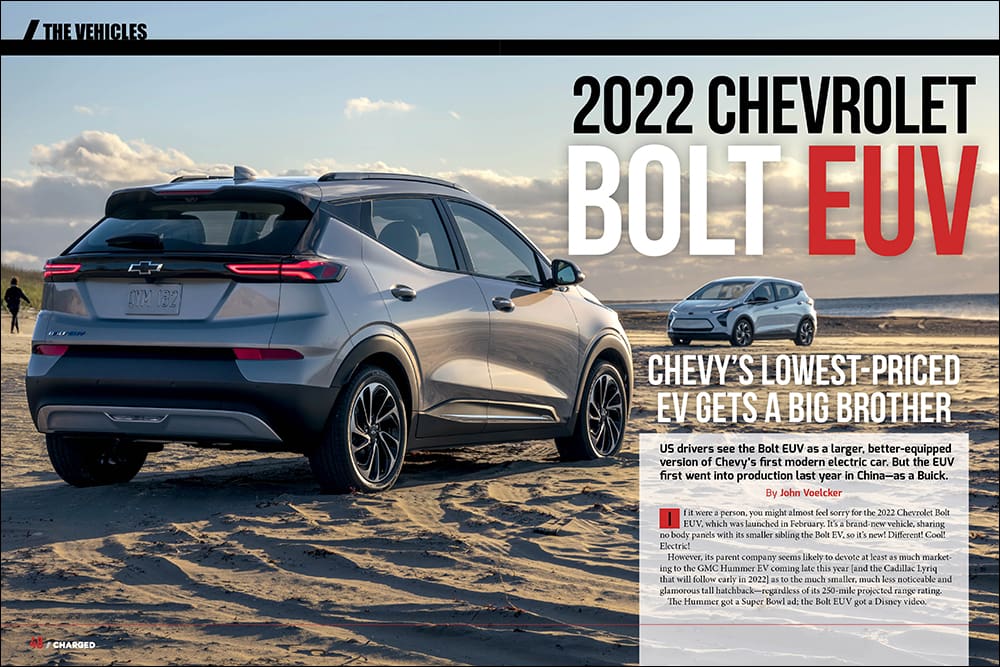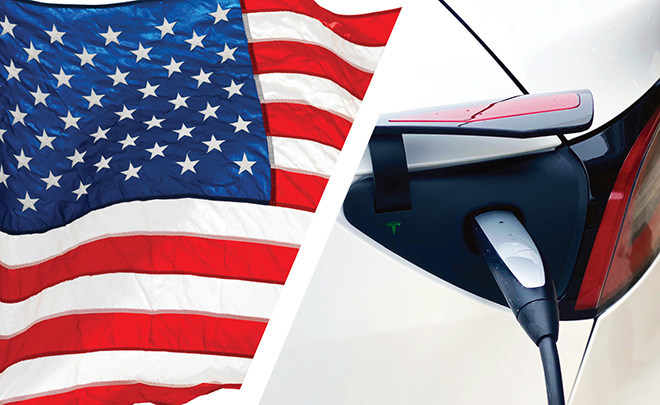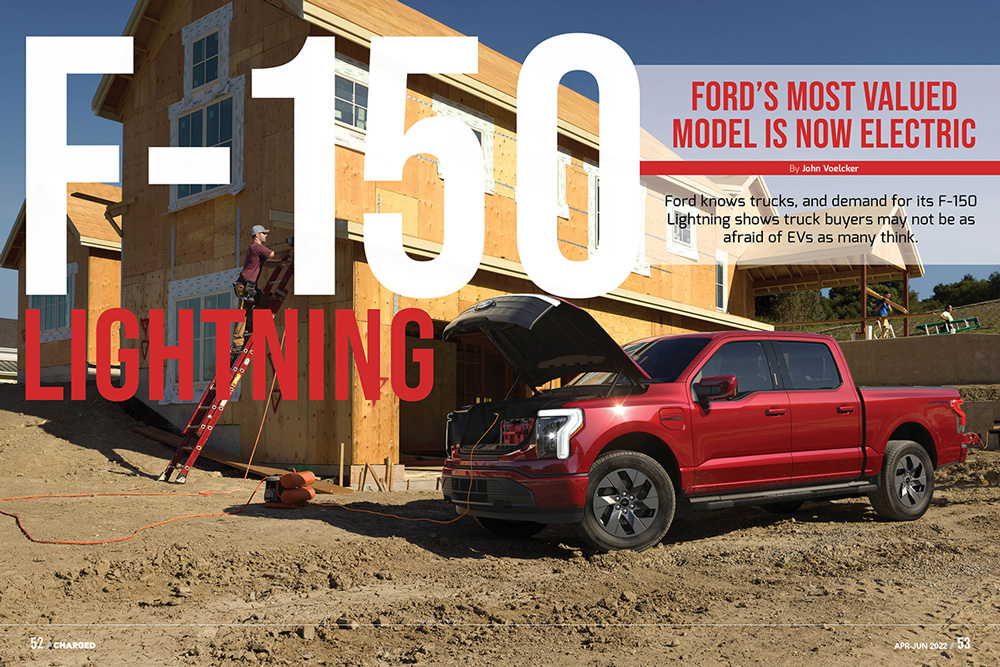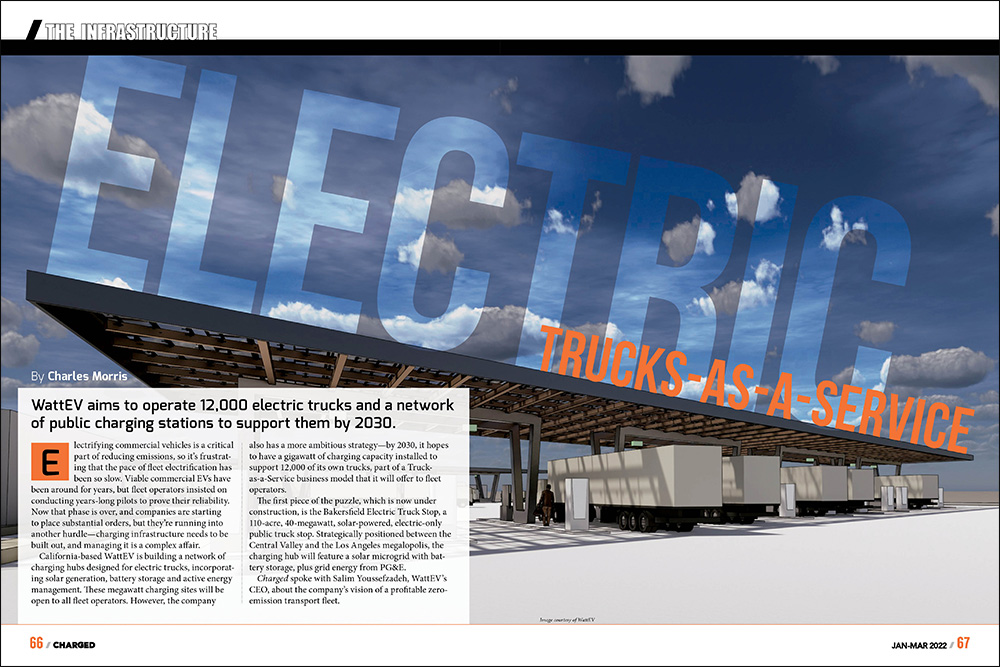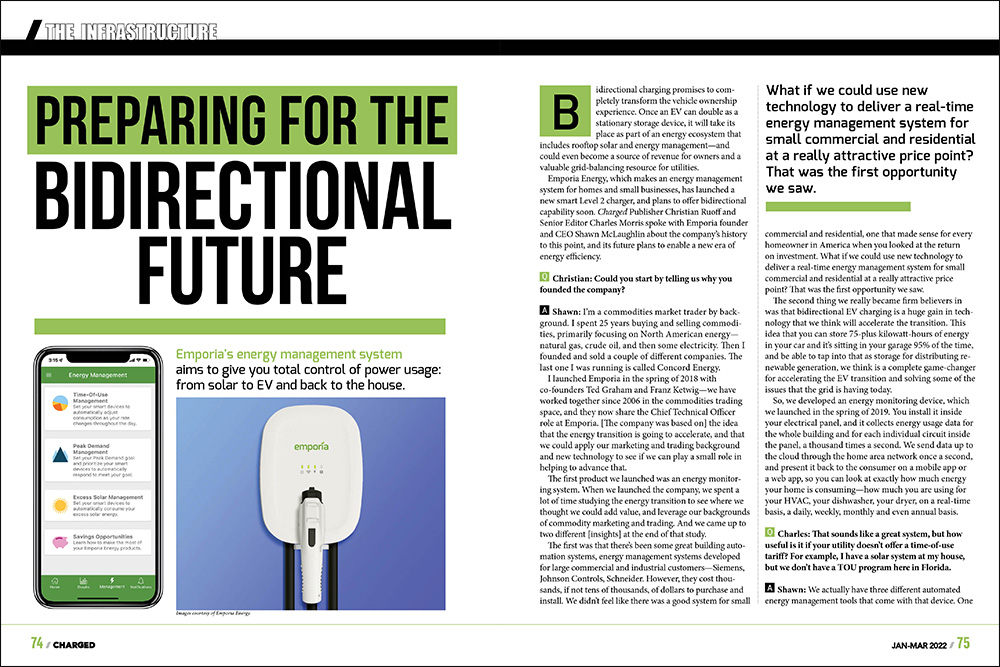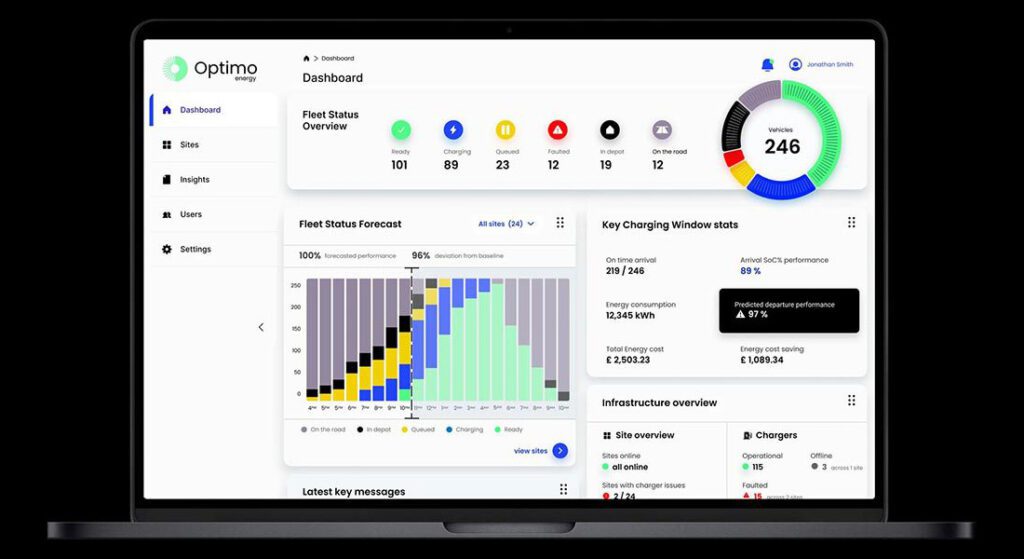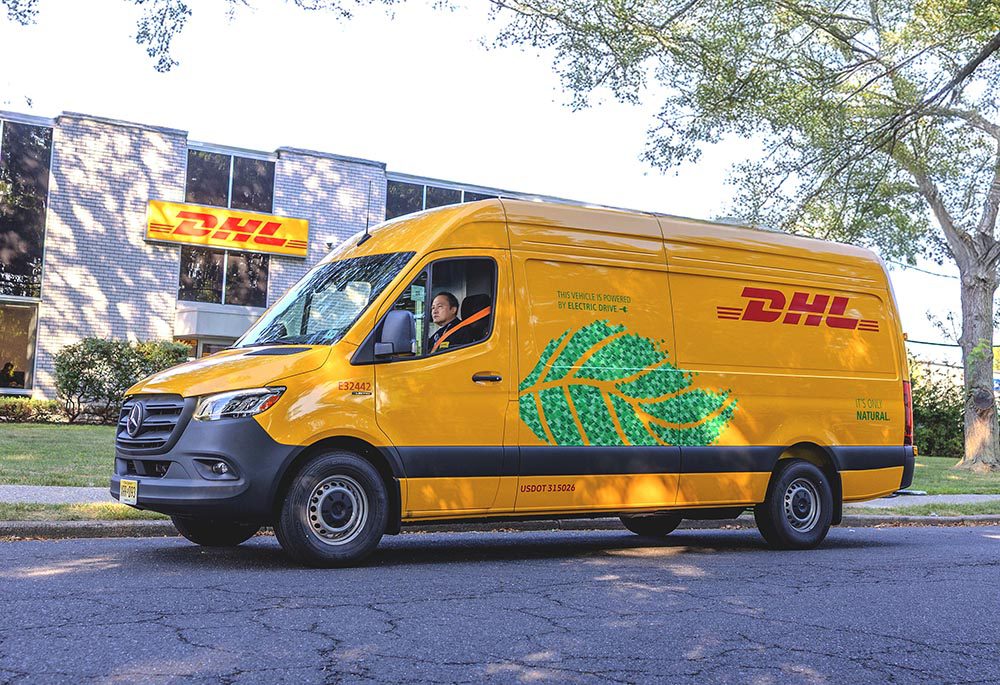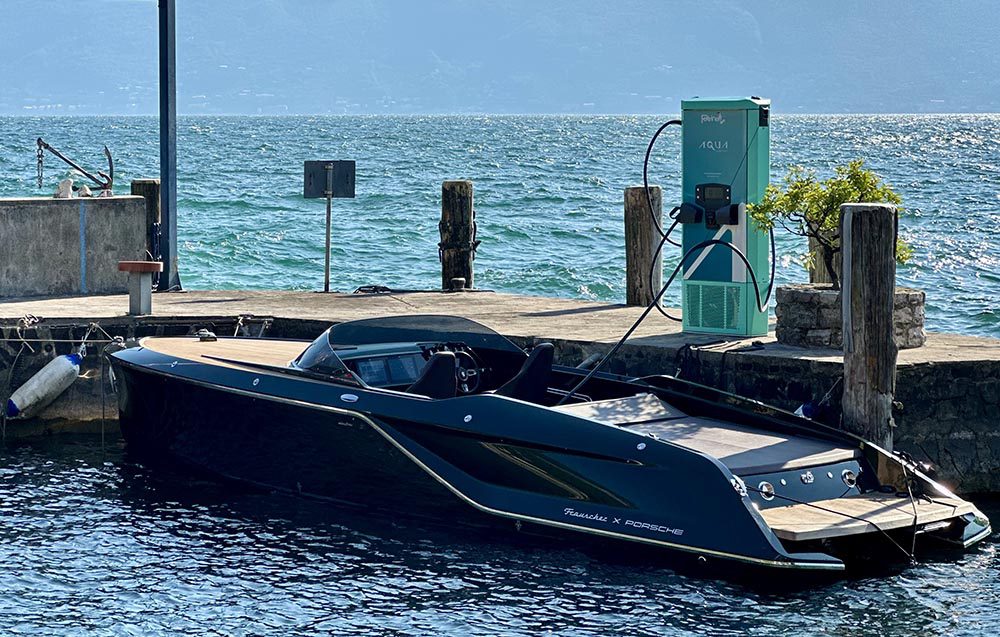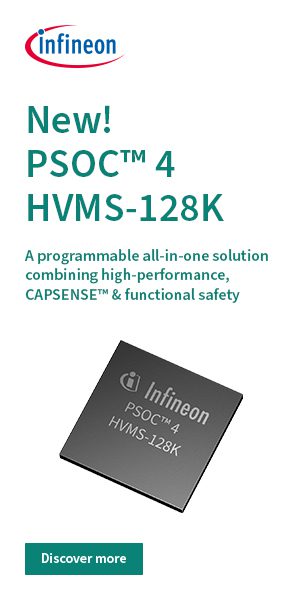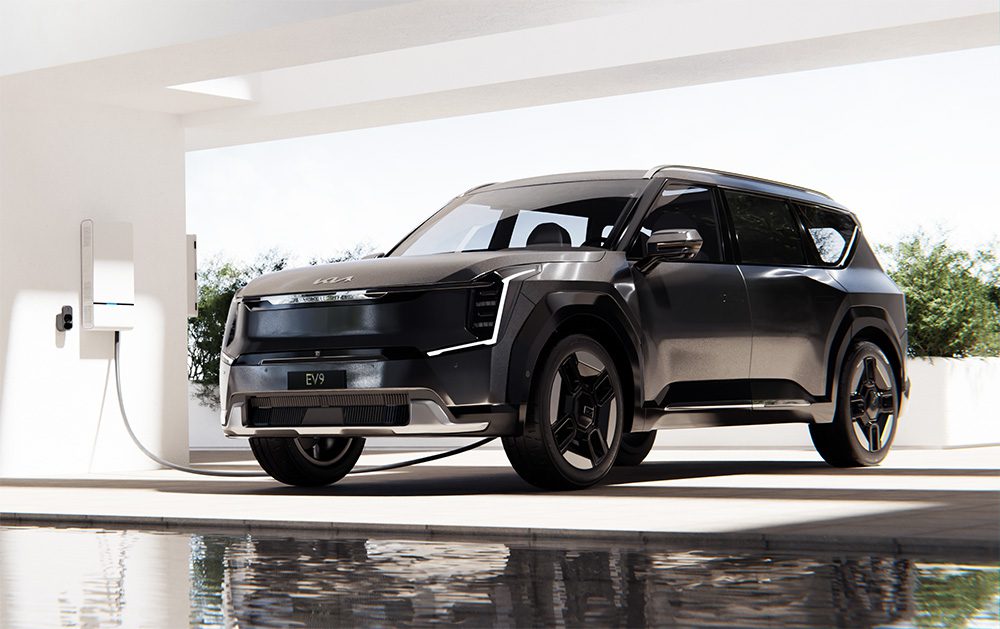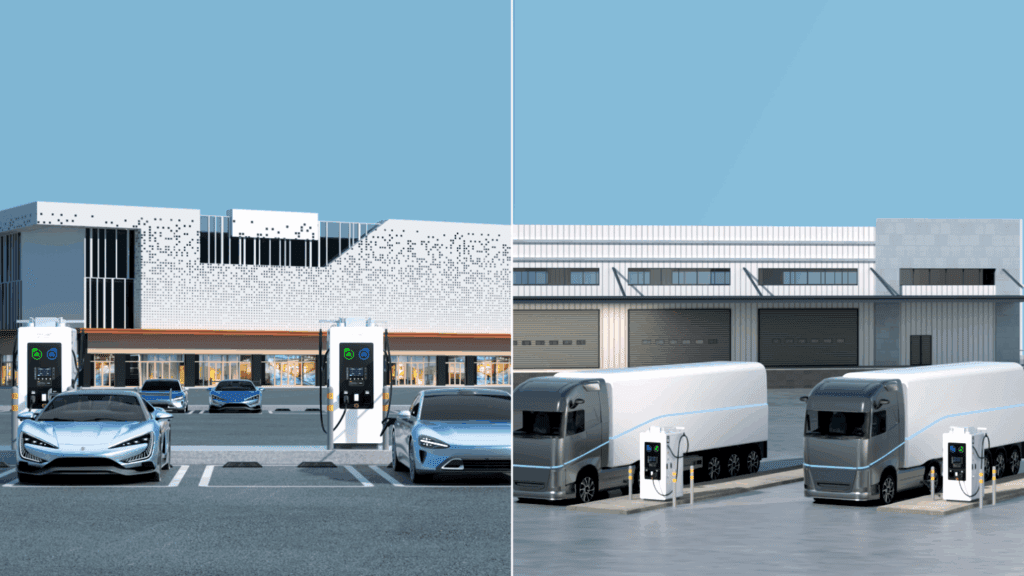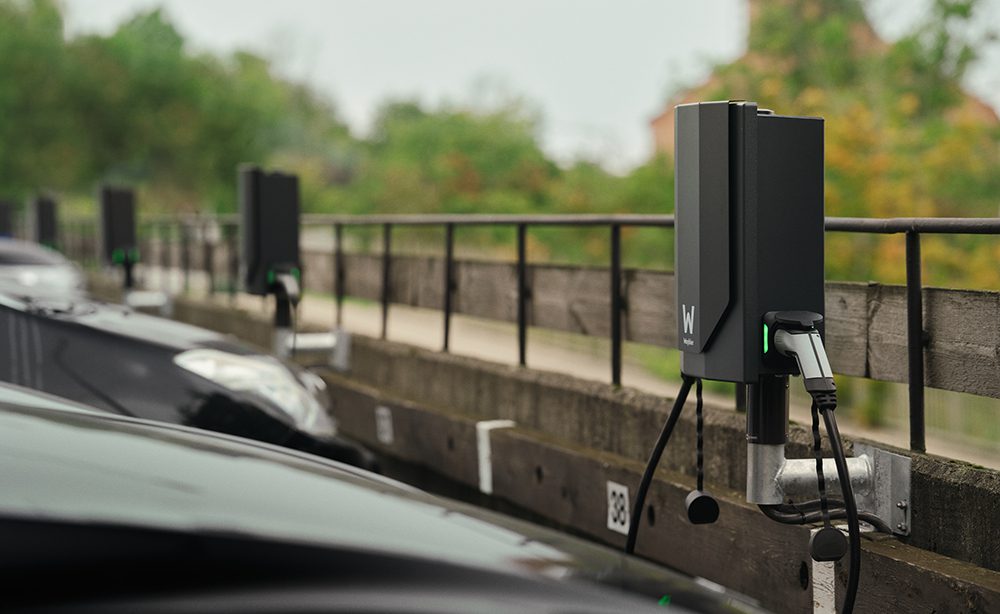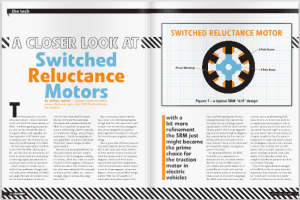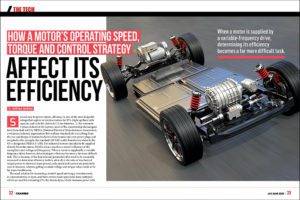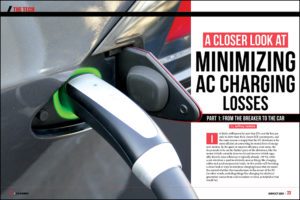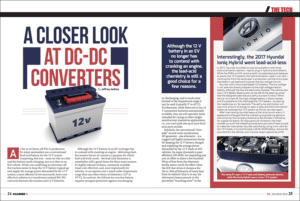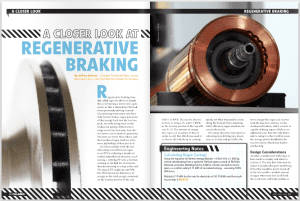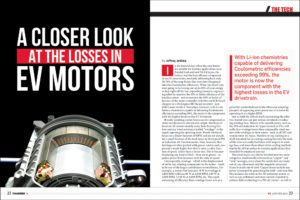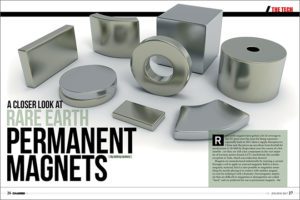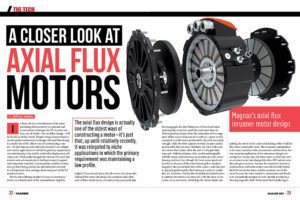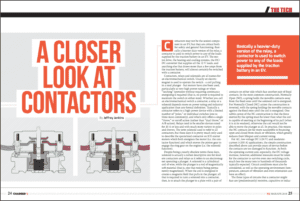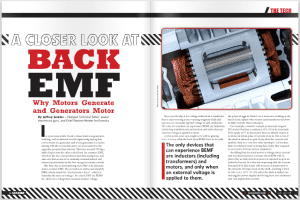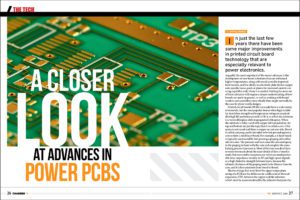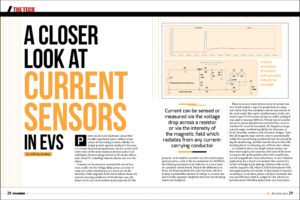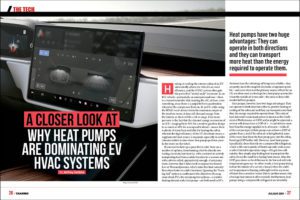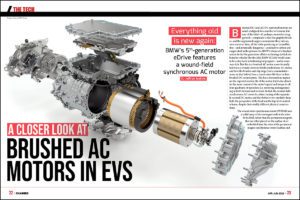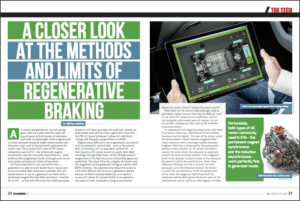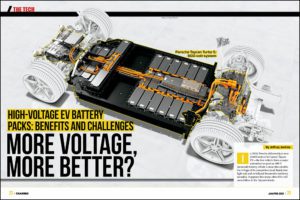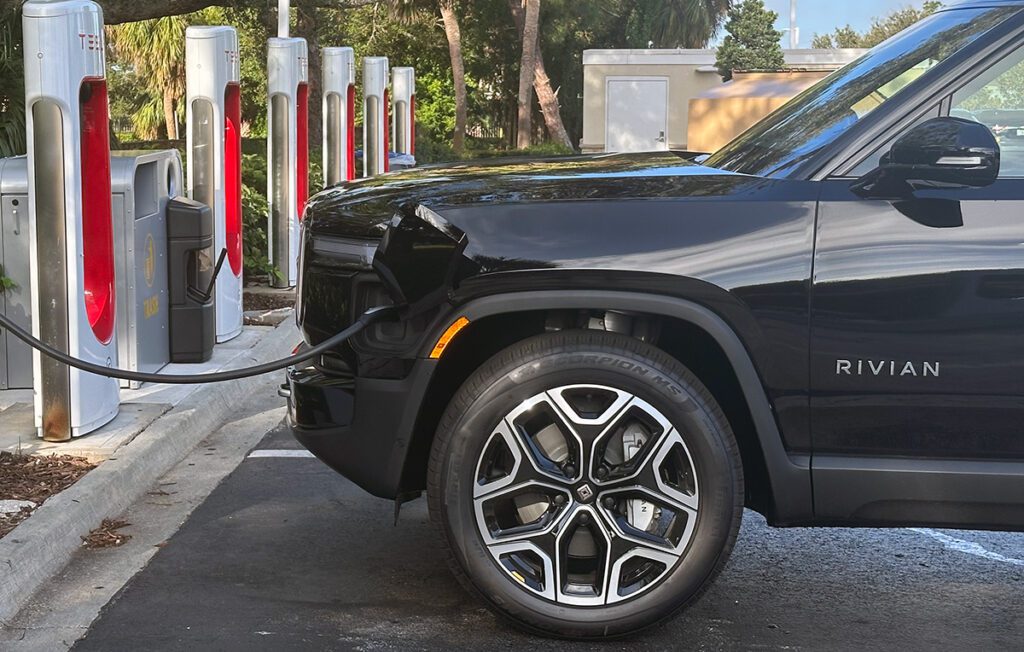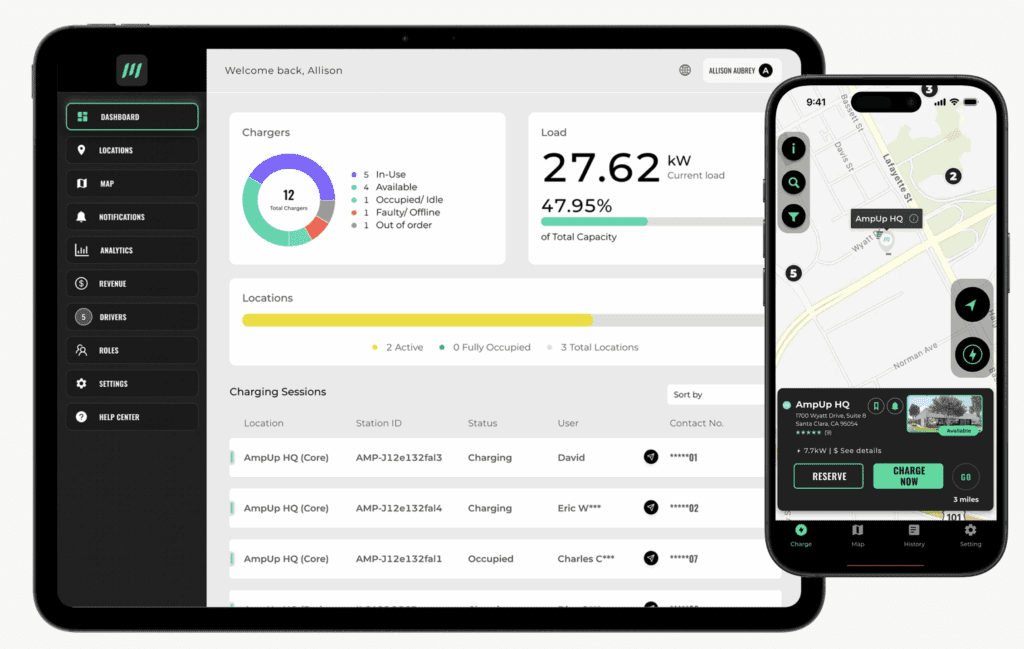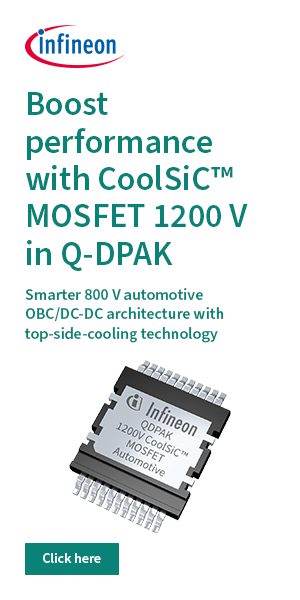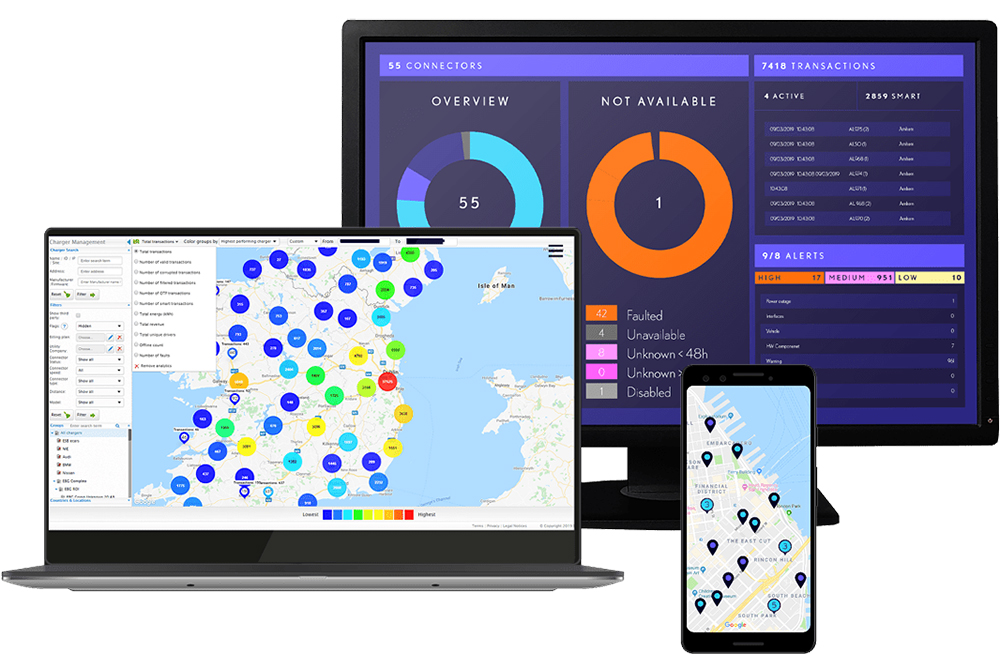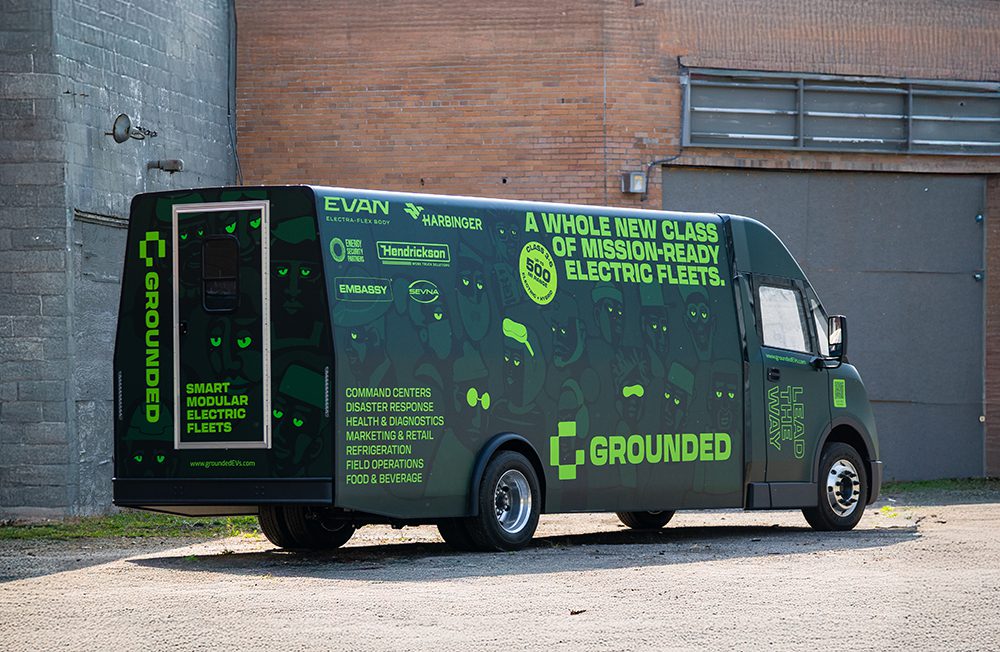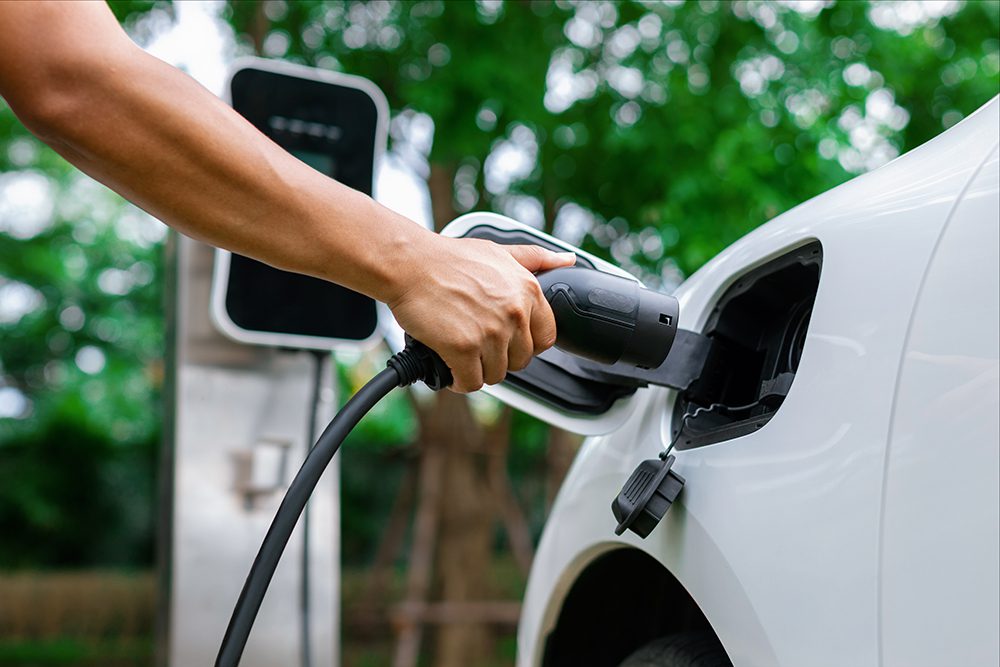- Many cite the fragmentation of the EV charging industry as a major reason for the scandalous unreliability of public chargers. FLO believes its vertically integrated model enables it to maximize reliability.
- FLO manufactures EV charging stations, and provides them to customers under a “sell-and-operate” or an “own-and-operate” arrangement.
- FLO’s Network Operations Center constantly monitors the company’s charging stations, and its field service team regularly makes physical inspections to identify potential problems.
- FLO operates curbside charging networks in New York, Los Angeles, Montreal, Toronto and Vancouver. The company’s curbside chargers feature retractable cables, and are designed to fit smoothly into the urban streetscape.
Q&A with Yann Benoit, FLO’s Senior Director for Network Operations.
Reliability problems plague the EV charging industry. The state of public charging is so bad that many now consider it one of the biggest impediments to large-scale EV adoption. Physical damage to the charging stations is seldom the problem, so why do these darn things so often fail to deliver a charge?
Charged has been putting this question to everyone we talk to in the industry. We’ve gotten a lot of answers, but a common theme has emerged—in many cases, several different companies are involved in a particular EVSE deployment. When you plug your EV in at a highway charging station, on the other end of that cable might be a site owner, a hardware manufacturer, an installer, a software provider, a communications network, a payment processor, an operations and maintenance provider (one hopes), and maybe even a utility and/or a municipality. This vast cast of characters not only causes interoperability problems, but also makes them hard to diagnose and fix.
FLO takes a different approach—the companymanufactures chargers, and owns and operates its own charging network. For Yann Benoit, FLO’s Senior Director for Network Operations, reliability is an absolute imperative. He explained to us why vertical integration is so important for reliability, and how his team keeps FLO’s chargers up and running.
Charged: Many companies build chargers and sell them for other companies to operate. Tell us how your business model is different.
Yann Benoit: We are vertically integrated, so that means R&D, production, sales and operations. We have the “sell-and-operate” model, and we have the “own-and-operate” model.
For example, we have about 1,500 curbside chargers with the city of Montreal, and that’s a sell-and-operate arrangement. We sold the chargers to the city, and we operate, repair and monitor the network for them. We also have a model under which we partially or completely own the chargers and we operate them as well.
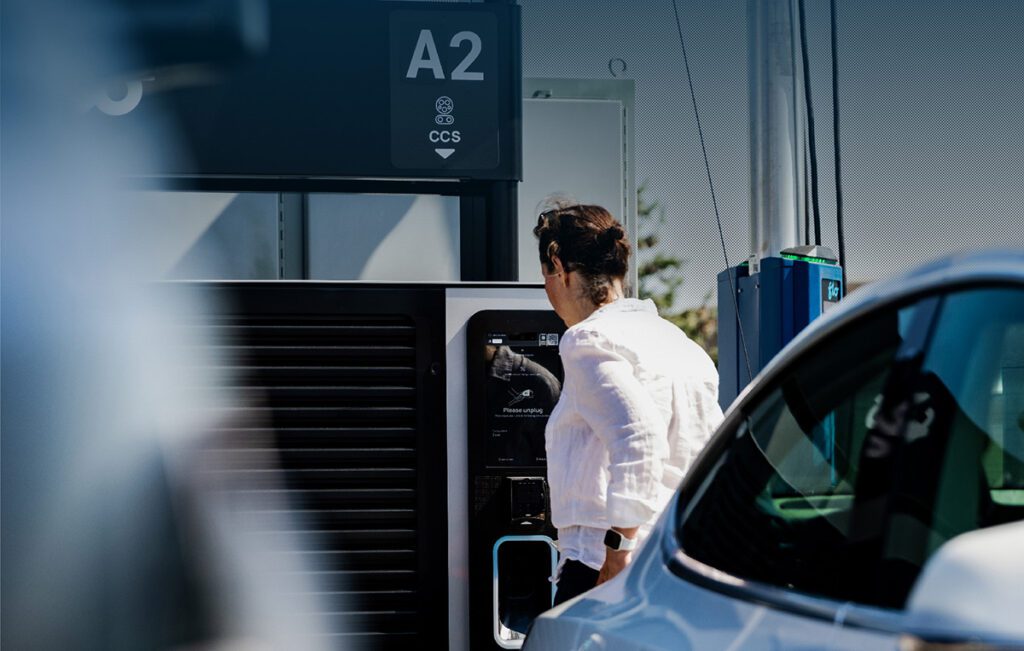
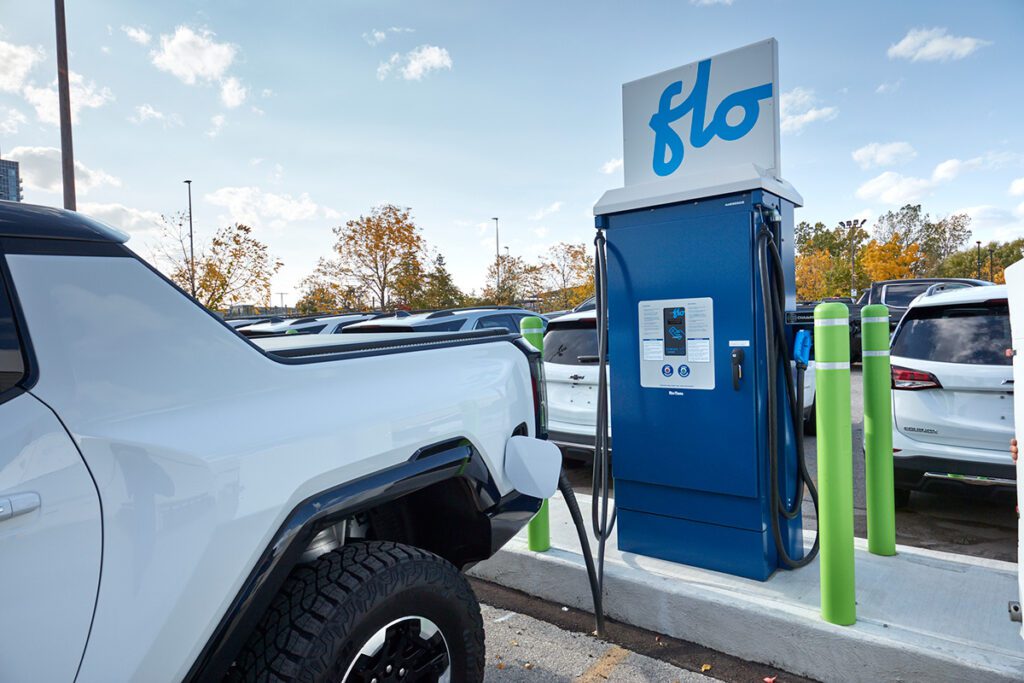
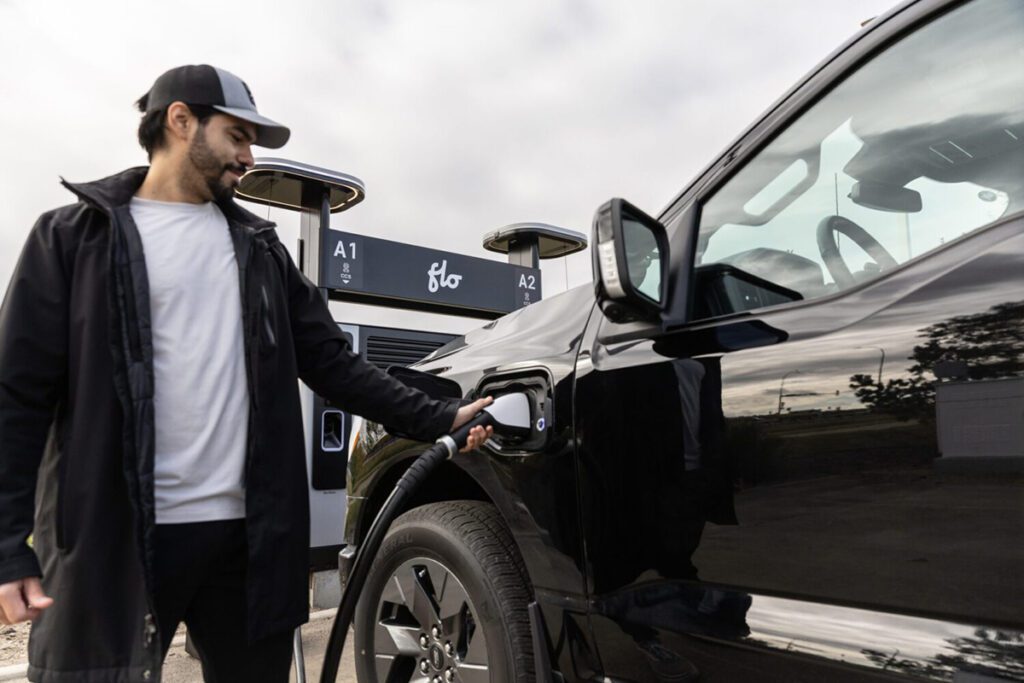
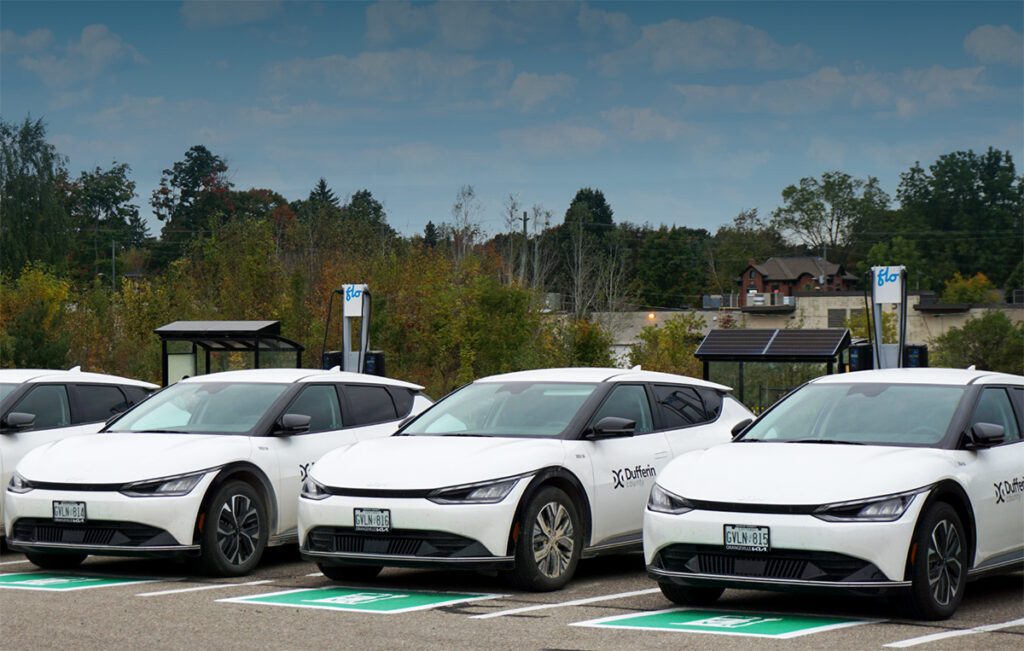
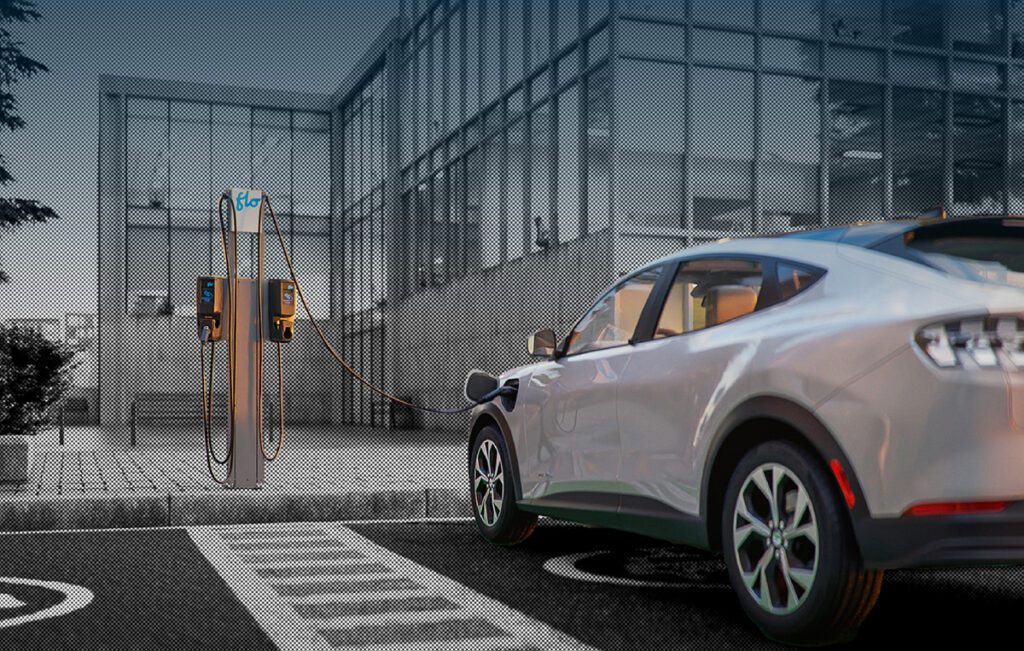
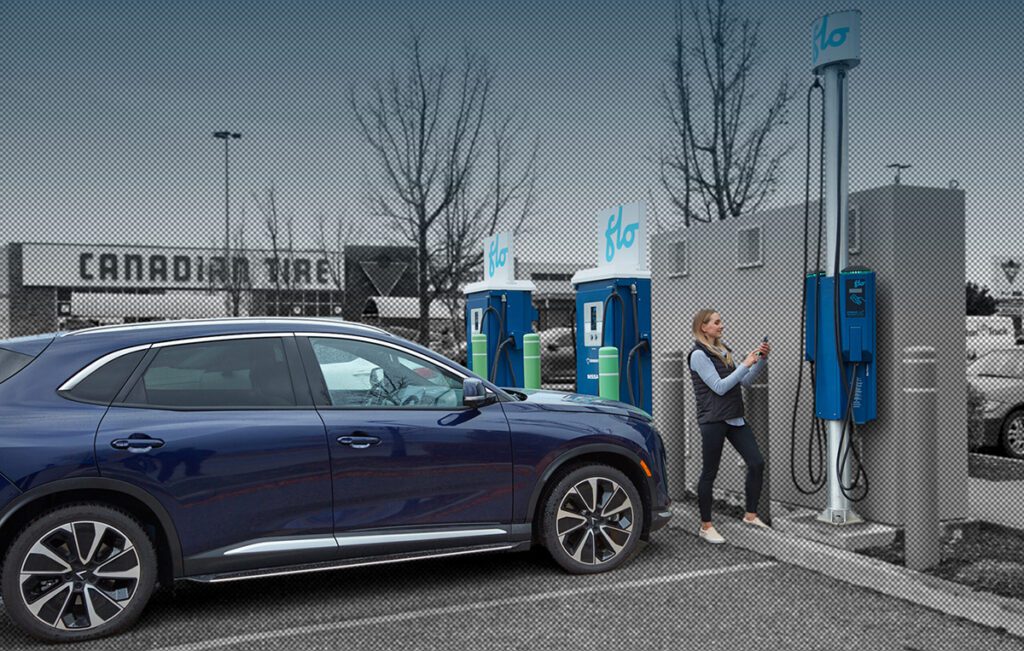
I’m Senior Director for Network Operations, and I have one team doing monitoring. We call that the Network Operations Center (NOC). Being vertically integrated, we have all possible details of hardware and software data points in those chargers. They’re all connected through cellular connectivity, and the NOC can see all charging sessions for billing, but also all possible problems. And we’re investing a lot to make sure that our software is always evolving so that we can be more efficient to support 100,000 to a million chargers. We need to be ready for that.
We’re investing a lot to make sure that our software is always evolving so that we can be more efficient to support 100,000 to a million chargers.
My other team is the field service team. We have FLO technicians in all major cities where we have a lot of chargers—Montreal, Toronto, Québec City, New York, Los Angeles, Vancouver. In places where we have fewer chargers, we have partners that we will dispatch so that we can service those stations.
My bread and butter is what we call uptime. It’s the number-one word in my team. If the NOC cannot repair remotely, my field team needs to be super-fast repairing and bringing those stations back into service.
I myself and my boss, we come from the telecom industry, where what we call dropped call and 911 and critical service is very important, and that’s exactly what we want to bring to the EV segment, this telco mentality of essential services and remote monitoring.
We also bring the mentality of controlling a network with big data and making good use of this data to operate the network. A lot of companies see themselves as manufacturers. We see ourselves as network operators. That’s the difference between stations that won’t work because you just put a charger in the ground there and you expect Joe to maintain it versus being responsible for these interconnected objects and the software to control them.
I and my boss, we come from the telecom industry, where dropped call and 911 and critical service is very important, and that’s exactly what we want to bring to the EV segment.
Charged: You manufacture charging stations, but you don’t just sell them and forget about them.
Yann Benoit: Exactly. In the sell-and-operate model, big customers, including the city of LA and the Toronto Parking Authority, work with us so that we can help them to maintain the chargers. It’s not their bread and butter to operate the network.
It’s way more than calling an electrician if there’s a problem, because it’s a complex piece of electronics and software. So, the vast majority of them, even after the warranty period is over, continue to work with us because these stations are connected via the FLO network and the FLO app—there’s a complete ecosystem there.
Charged: Do they all work through the FLO app or do some of your customers have their own apps?
Yann Benoit: Some of our customers have their own apps. As you know, there’s roaming between many of those networks. The important thing is the interoperability of those platforms.
Charged: So, some of your products are sold on a white-label basis? The EV drivers don’t necessarily know that you’re the company behind it?
Yann Benoit: Yeah. If you come to the province of Québec, you would be impressed by the number of chargers per capita that we have here. For a small population of eight million people in the province, there’s about 10,000 chargers. FLO is from here and we’re working with Electric Circuit [aka Circuit Eléctrique], which is owned by Hydro-Québec, the biggest utility company here. It’s all white-label, it’s all branded Electric Circuit, but we’re behind that every day. My technicians are monitoring and maintaining the vast majority of those stations.
Charged: Another problem I see is that the apps that network operators require drivers to use sometimes don’t work very well.
Yann Benoit: I’m not so convinced that it’s because of the app. I think it’s because of the patchwork of too many different people trying to make things work, but separately. And that’s why I always start by saying that we’re vertically integrated and that we’re operating those chargers.
In a situation like that, who can you call to make sure you have support? With the FLO app or a FLO charger, there’s a phone number you can call and there’s a 24/7 agent on the phone who can start the session for you—if you’re using an application that we don’t know, the support rep can start the charger for you.
But let’s focus on the bigger network maintenance issues. I’ll give you our curbside charging network in New York as an example. It’s a partnership with the city of New York. We have full-time technicians there, and I tell them, “This is your network. Take pride to make sure that the chargers work all the time.”
They’re visiting all those chargers every two weeks. Problem or not, they visit every charger, make sure that the cellular modem works correctly, that the cable is not damaged, that the screen is clean. It’s all embedded in their app. I can keep track of every station that was visited, when and for how long. And if there’s a problem, of course they repair it on the spot.
We have FLO technicians in all major cities where we have a lot of chargers, and I tell them, “This is your network. Take pride to make sure that the chargers work all the time.”
That’s the power of owning or at least standing behind your network. And our network has 99.9% uptime in New York. If somebody drops a cable right now and breaks it by mistake, the worst case is that in two weeks somebody will see that and fix it. The best solution is that if something breaks and we can detect it via the NOC, four hours later the technician will go.
That is essential for success, that networks have this mentality. We have scrums every morning with our biggest networks and customers. For some other networks, like a network of 500 curbside chargers, we will have a weekly call at least. “Okay, this week we fixed this station. We saw these new alarms. We’re going to go this week. Are you okay with that, Mr. Owner?” This communication is also part of the secret sauce if we don’t own the station.
All the software and automation behind that is also crucial. What exact status and potential alarms are you reading from the stations? What types of alarms do you see? How do you prioritize your alarms? How do you automate some processes?
As an example, it can be tricky to diagnose a problem if you see a low power output for a DC charging station. Is it because cars are not asking for enough power, or is it because there really is a problem with the station? We needed to develop a complex algorithm to make sure that we can detect low power outputs that are suspicious. The algorithm will flag a potential problem every two hours at the monitoring center. They will analyze it and decide whether or not we need to send a technician.
We have a new version of our DC charger. It’s called the FLO Ultra. We’ve put about 250 different sensors there. My network operation team can connect to those sensors and improve the algorithm to get the most of that information. If the temperature is high and fan number six doesn’t work, then the probability of a problem is…
As you can see, I’m pretty passionate about that. We have a lot of emphasis on physical repairs, of course. I need my technicians to be very efficient. We need the best dispatching tool to do that. We need to give our technicians the best possible app so that they can see where to go, what’s the problem, what parts to bring.
But we spend just as much time developing the monitoring software with the monthly software demos so we can make sure that we’re always evolving our software to be better and stay at 99%. Because that’s our average these days, we’re up 99% of the time. And just to be clear, “up” means able to provide a charge. It’s not just that one station works. No, no, no. If one station is not able to provide a charge, even if there are two, three other stations at the same site, we don’t calculate that as up. The station is down.
Charged: Let’s talk about curbside charging, which I think is going to be a major growth area. You have a new charger that’s optimized for curbside applications.
Yann Benoit: Well, curbside charging, I see that as urban furniture. It is intended for very dense and crowded areas.
We need to be able to lock the charging cable so that it doesn’t hang on the ground, to make sure that it stays in good condition. We need a good retracting cable also, so that, again, it doesn’t lie on the ground. In the north, there is a bit of snow and it can be dangerous if the cable lies on the ground.
Our SmartTWO charger is optimized for curbside charging. In New York, we developed a charger in cooperation with the city so that it blends well into the urban furniture with a specific signature, but it’s the SmartTWO behind it. It looks like a light pole. It can be installed on a light pole as well. In fact, in New York, there’s kind of an aluminum pole and the retracting cables are inside. It blends very well into the environment.
For curbside charging, we need to be able to lock the charging cable, and we need a good retracting cable, so that it doesn’t lie on the ground.
We also designed it so that if there is an accident, the pole would fall on the car and not on the curbside, to protect the pedestrians. In LA, they took the exact same SmartTWO, but they decided to fix them on their own light poles.
It’s designed to be integrated into the city environment, so that’s why it’s so successful. One of the biggest charging stations using this specific charger is near a train station in Montreal. You have 60 of them all aligned together. Every morning there are 60 cars charging there.
Utilization of our curbside chargers in New York is extraordinary. The percentage of time that those chargers are in use is shocking. The program has seen utilization dramatically increase since the program began: from 27% in 2022 to almost 64% in 2024—one charger even reached a high of 82% utilization rate! So, they are well positioned where people need to park. Of course, in New York, not a lot of people have a driveway. They need curbside charging—it’s an essential service, so the fee is less during the night—it’s only a dollar per hour for the night.
In fact, the only thing we need to improve for New York is the numbers of chargers deployed. This was a test we did with Con Edison and the New York City Department of Transportation. Our network in Manhattan and Brooklyn is about 120 chargers (100 public chargers and 20 private ones). We need to multiply that by 50 or 100. We’re super-happy about those. They are clean, they work 99.9% of the time, they are well-positioned. This is exactly what drives utilization.
Montreal will continue to add more chargers. With the great success we had in New York, everybody’s super-happy. We won a prize last year—the Outstanding Demo Partnership award—at the 2024 E-Mobility Awards by Consolidated Edison for high reliability of the project.
Charged: There’s loads of potential business out there, and you have several competitors. itselectric designed a curbside charger that doesn’t have a cable attached. It’s more like the ones in Europe where the driver brings their own cable. What do you think about that model?
Yann Benoit: I personally wouldn’t want to bring my own cable. I don’t think the EV driver would want that burden. What we observe in New York, Montreal, Toronto, Vancouver, Los Angeles, is a good solution with the cable management system.
Some cities have more vandalism than others, but in New York, it’s not a problem. Not at all. I believe more in a good maintenance system than in asking the EV driver to provide a cable, because it’s going to lie on the ground and get dirty. People will trip over it. In New York, the cable is just going from the top of the charger gently to the car, so for me, it’s a non-issue.
I personally wouldn’t want to bring my own cable. I don’t think the EV driver would want that burden.
Charged: Another one of your competitors, char.gy, in London, makes a tiny charger that fits into an existing lamp post. Your machines mount on the lamp post.
Yann Benoit: Working with the city to make sure that we integrate well with the city environment is really, really important. That being said, we must not forget the serviceability. Even if they’re very tough, any charger can fail, so it needs to be easy to service. My guys, if they want to change a charger in New York, it takes 10 seconds. Fast and effective serviceability is critical.
Charged: Is battery storage or battery buffering a part of the equation, or do you need that with a curbside application?
Yann Benoit: So far, not necessary, just because of the power involved. When we are deploying a network, like in New York for example, it’s a partnership. The electric utility—in that case, Con Edison—is responsible for the electricity part of the project. Our job is to provide the chargers and maintain them over time.
In all the curbside projects we’ve done, battery banks were not used or necessary. It’s in the city, so There’s a lot of power available. For Level 2, you don’t need that much power. In the case of New York, the chargers are beside the street lamps. In the case of Los Angeles, they’re on the light poles, so it’s easy for the electricity company to bring the power.
Charged: You have different form factors in different cities. In New York and Los Angeles, you use slightly different hardware. Is that because of the city’s requirements?
Yann Benoit: City requirements, that’s exactly it. When planning the project, we discuss with the city or the owner. I don’t want to say that we’ll customize everything, but for a big city like that, it’s normal that we adapt. It’s the same charger, it’s the same technology, same retracting cable—the only difference is that in Los Angeles or Toronto, it’s going to be attached to an existing light pole, but in New York or Montreal, it’s a standalone pole with the retracting system that’s added as city furniture.
This pole in New York City that will fall on the car and not on the curbside was specifically developed and patented talking with them. We thought it was a good opportunity to innovate, and it’s a good product. Even if a car would hit one of the New York chargers, it would fall on the car, not on the curbside, and the cables, the way they are attached, would automatically disconnect as well to make sure that there’s no electricity hazard.


